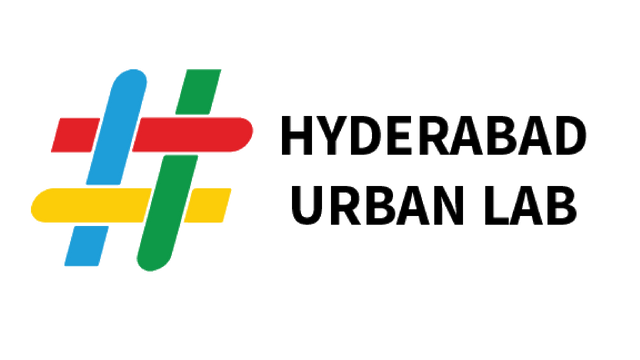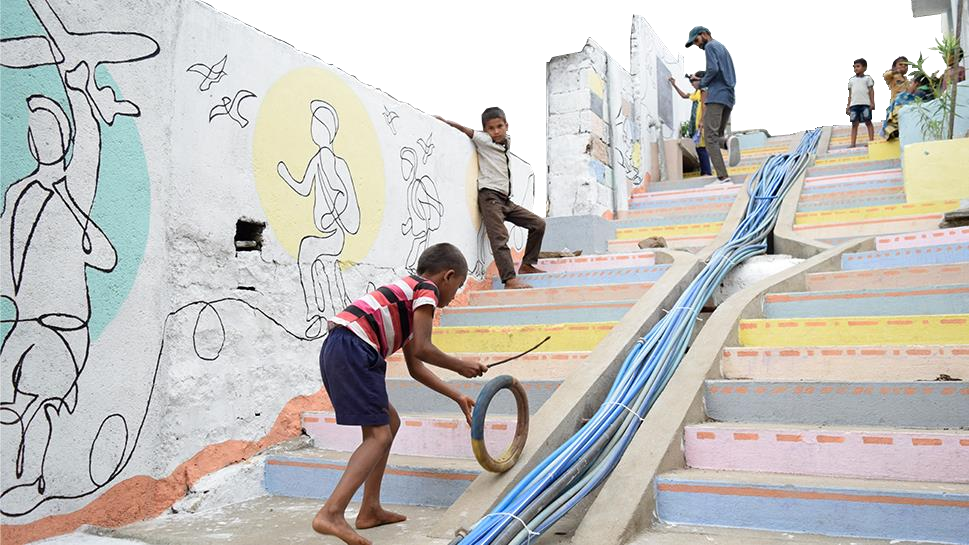
Compete to unlock the potential of the city’s many under-utilized spaces!
Image: JALAM - A small but creative intervention to re-imagine
a hillside in one of Hyderabad’s low-income settlements

Idea stage selections announced!
483 people from 24 countries with diverse backgrounds registered for this iteration of i’Local. Participants came from various disciplines including art, architecture, law, natural and social sciences. They engaged in workshops, team building exercises, and online group activities. Out of the 51 entries received for the context, the jury has now selected 11 who will receive mentorship to carry forward their idea with dedicated professional mentors and develop proposals for implementation.
Selected Proposals
Resume Mucchatlu - Around Amin Khan’s Tomb
Members: Manojna Polisetty, Rohitha Manupati, Vivek Rakotu, Sri Mallika Vyshnavi V
Pathar Ka Ghost - Khajaguda Hills
Members: Chanda Patel, C M Sanandana, Sandra Palathingal, Hamiska Gummadvelly
Studio Hyderabad - Phool Bagh
Members: Rahul Palagani, Archana Pothina, Anisha Padma, Federico Pedrazzani, Fereshteh Nazari, Sasank IVS
Resume Mucchatlu - Khajaguda Hills
Members: Manojna Polisetty, Rohitha Manupati, Vivek Rakotu, Sri Mallika Vyshnavi V
Spatial Detectives - Sinagreni Colony
Members: Gannamaneni Sai Manaswini, Nivedita Tuli, Arzoo Gupta, Irene Antony
Team Pinoy - Old Police Outposts
Members: Johnathan Greenwood, Juvy Lalaine, Justin Ryan Guzman
Guardians of Khajaguda - Khajaguda Hills
Members: Shaik Nawaz Shareef, Jayita Mukherjee, Ras Bihari Mahato, Namdev Talluru, Nischala Namburu, Akshat Deshmukh, Pyla Bharathi
Pehchaan - Lata Enclave Old Bus Stop
Members: Vishakha Tiwari, Maitry Patel, Dr. Vikas Sehra
City Boiz - Kite Park Saroor Nagar
Members: Nishanth Obula, Shyam N K, Anirudh Dachaepalli, Devakrishnan, Keshav Thakur, Venkat
Plug-Ins - Khajaguda Hills
Members: Nandja Chopra, Sindhuja, Radhika
Spatial Detectives - Old Police Outposts
Members: Gannamaneni Sai Manaswini, Nivedita Tuli, Arzoo Gupta, Irene Antony
SPECIAL MENTIONS
Team Pratham - Around Amin Khan‘s Tomb
Members: Pratham Rathi, Dr. Neha Agarwal, Shivani Goud
Resume Mucchatlu - Prem Nagar Rock Gardens
Members: Manojna Polisetty, Rohitha Manupati, Vivek Rakotu, Sri Mallika Vyshnavi V
Metro Minds - Phool Baagh
Members: Akshata Atole, Aditi Dhorde, Rishu Jaiswal, Dr. Vikas Sehra
Spatial Detectives- Prem Nagar Rock Garden
Members: Gannamaneni Sai Manaswini, Nivedita Tuli, Arzoo Gupta, Irene Antony
Team Pinoy - Around Amin Khan’s Tomb
Members: Johnathan Greenwood, Juvy Lalaine, Justin Ryan Guzman
Udaan - Kite Park Saroor Nagar
Dr. Vikas Sehra, Sok Tithmali, Nischala Namburu
A competition with a difference
Calling students, researchers, designers, social scientists, media professionals,
journalists, artists, architects, urban planners, and others!
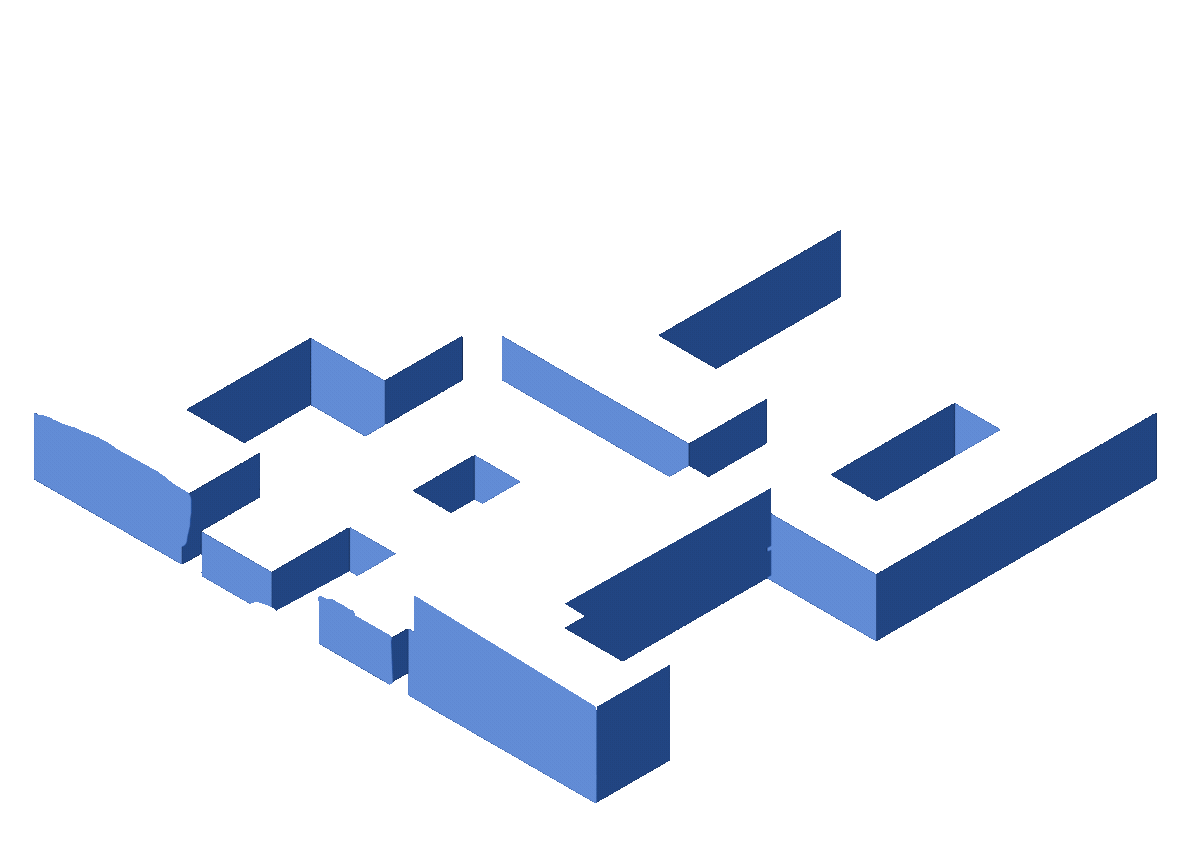
Hyderabad Urban Lab Foundation in collaboration with Wipro Foundation announces Imagine @ Low-cost Action Lab (i’Local), a competition for urban rejuvenation inviting applications from young and multi-disciplinary teams!
i’Local supports and nurtures meaningful placemaking efforts through the (re)imagination of city spaces and the values associated with them. It is an opportunity to revitalise sites of neglect, disuse, and disrepair and return them to their communities. It calls for imagining pathways that make the creative use of existing resources, rather than large investments.
Participating teams may choose to work on one or more of the ten pre-determined sites scattered across Hyderabad. In part one of the competition, interested participants identify a site, network and form a team, attend virtual workshops, and generate ideas concluding with an abbreviated submission of their best idea. In part two, the jury selects ten teams to carry forward their idea with dedicated professional mentors for a robust final submission. The selected teams win cash prizes and an opportunity for their idea to be published in an ideas compendium.
Contact us at askhydlab@gmail.com if you have queries.
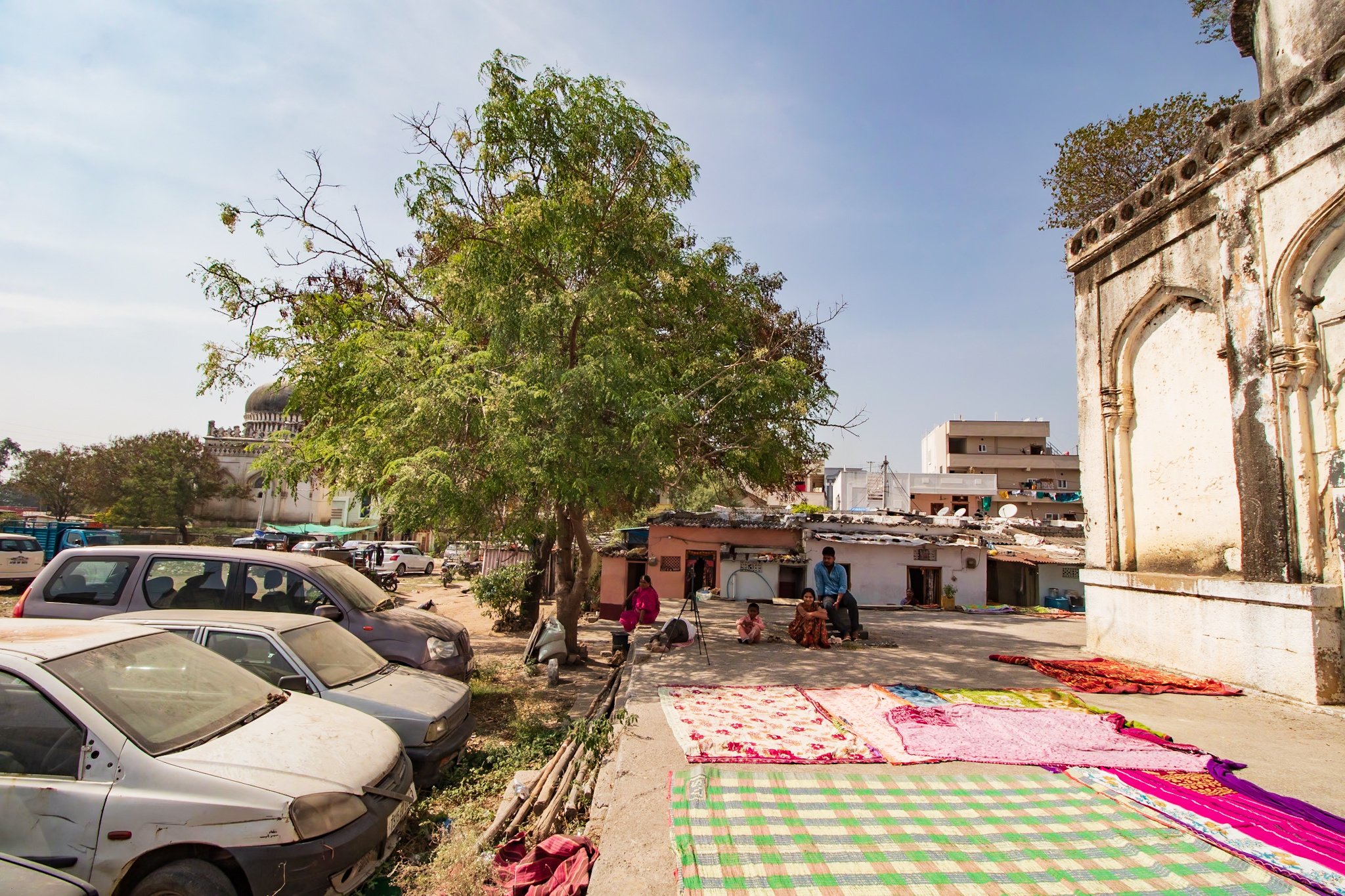
An opportunity to revitalize sites of neglect, disuse, and disrepair.
ELIGIBILITY
The competition is open to all! Entries need to be sent in by teams of three or more. Interdisciplinary teams are highly encouraged; for example, they may include architects, designers, social scientists, media students, and/or professionals!
DON’T HAVE A TEAM YET?
Register as an individual and we will help you connect with potential collaborators.
FOUR KEY THEMES
What makes us feel safe in the city?
The challenge lies in crafting public spaces that are not only inclusive but instill a feeling of safety among diverse users. In Hyderabad, public spaces are often male-dominated, leading to a fear of violence, bullying, and harm that in turn impedes access to work, play, leisure, and health for many. This pervasive lack of personal safety manifests in various forms, from the discomfort of women using public transport to the risk of isolation and targeting of queer communities, children, and the elderly. Pedestrian accidents and incidents of violence against women in public places underscore the urgency of this issue. i’Local seeks innovative solutions that address specific safety concerns for different user groups--fostering a city where children can play freely, women can travel without fear, young men have communal spaces, and the elderly and disabled are welcome. Proposals may consider but are not limited to the following aspects as tools to enhance the safety of public spaces: supporting ‘eyes on the street,’ positive pedestrian infrastructure, clean and accessible facilities, cultivating a sense of ownership (through regular maintenance, social activities, good lighting, etc.), and inclusive representation in programming spaces. Participants are encouraged to think beyond conventional norms and contribute ideas that redefine ‘safety’ and ‘inclusivity’ in Hyderabad’s urban fabric.
How can a city be child-friendly?
Hyderabad faces a shortage of publicly accessible areas for socializing and unwinding. Civic infrastructure is often incomplete, hard, and scaled for adults resulting in hostile architecture for children. Recent surges in growth have resulted in new developments overtaking spaces of nature and scaled to prioritize vehicular transportation over walkable spaces, further diminishing access to public space. The shortage of playgrounds and sports facilities in nearly 50% of city schools negatively impacts children’s physical, mental, and social growth. These issues extend beyond children, affecting adolescents and young adults as well as women, the elderly, and differently-abled individuals who face isolation and limited recreational opportunities. The competition encourages participants to reimagine urban public spaces as safe, accessible, and inclusive areas that enhance socializing, creativity, and learning opportunities, especially for children and youth. From neighborhood parks and gardens to hiking routes and waterfronts, i’Local seeks accessible spaces that foster environmental awareness, cultural understanding, and overall well-being. Participants are challenged to consider the spectrum of children’s developmental and sensory needs, apply appropriate architectural scales, provide opportunities for sustained engagement, and support children’s control over their environment. The goal is to empower residents to shape their neighborhoods, promoting cohesion, rest, and enjoyment in the city's public realm.
Why wait for large investments in infrastructure to solve daily but profound problems? Make a difference using available resources today!
We look forward
to receiving your ideas that respond to one or more of these
key themes!
How can we seed positive change in our urban ecologies?
Hyderabad has multiple historical water bodies, Nizam-era banyan trees, and a distinctive topography. Yet, these endemic ecological markers are at risk due to rapid urbanization. The city is grappling with altered precipitation patterns and changes in land use leading to deformed landscapes, extreme weather events, and a contradictory situation of water scarcity (alongside the disappearance of vital water bodies) coupled with severe urban flooding. i’Local challenges participants to rethink Hyderabad’s urban ecological sites at the neighborhood scale, leveraging the concept of ‘urban acupuncture’ to seed positive change in these neglected and abused spaces. The goal is to encourage local action that creates a cultural and physical legacy, inspiring a collective belief that change is not only possible but imperative. By engaging citizens in co-designing small interventions within the existing urban environment, the competition aims to shift stakeholder perceptions of what is permissible, desirable, and possible for the city's ecology. The focus extends to managing rainwater at the local scale, preserving old and mature trees, creating small-scale wetlands, green/blue streets, and fostering community gardens and food networks. Participants are prompted to rethink the concept of a ‘classroom.’ How could these spaces become a place that educates children about plant life cycles, ecosystems, and sustainable practices while instilling a sense of curiosity about Hyderabad's rocks, trees, and birds? Ultimately, i’Local seeks ideas that infuse elements of nature into urban life, nurturing a generation of environmentally conscious individuals who actively contribute to the restoration and protection of Hyderabad's ecological assets.
How can people cope with rising urban heat?
Hyderabad is already known for record-breaking temperatures and heat waves in the summer months. Recently, rapid urban growth paired with reduced green spaces has increased the heat index resulting in hotter summers through the phenomenon known as the urban heat island effect. While the impact is felt by all communities, some groups are more vulnerable than others such as children, pregnant women, the elderly, outdoor laborers, and those in poorly built homes. i’Local challenges participants to devise low-cost approaches for designing public spaces that can help all urban residents cope with extreme heat conditions. Participants are encouraged to envision cool and green roofs or pavements, explore natural ventilation strategies, and increase shade in the work environments of gig workers (freelancers), and those commuting to the city. i’Local encourages proposals that foster micro-ecologies through rainwater collection, permeable surfaces, and increased vegetation cover to create ‘cool’ spots. Can you imagine how some of these sites could be used for creating knowledge on heat and its impacts and fostering changes in community behavior to mitigate them? As Hyderabad grapples with scorching summers, i’Local seeks forward-thinking designs and approaches that offer practical, efficient, and sustainable relief for its residents. Participants are encouraged to share innovative proposals that demonstrate the potential for positive change in the face of climate challenges.
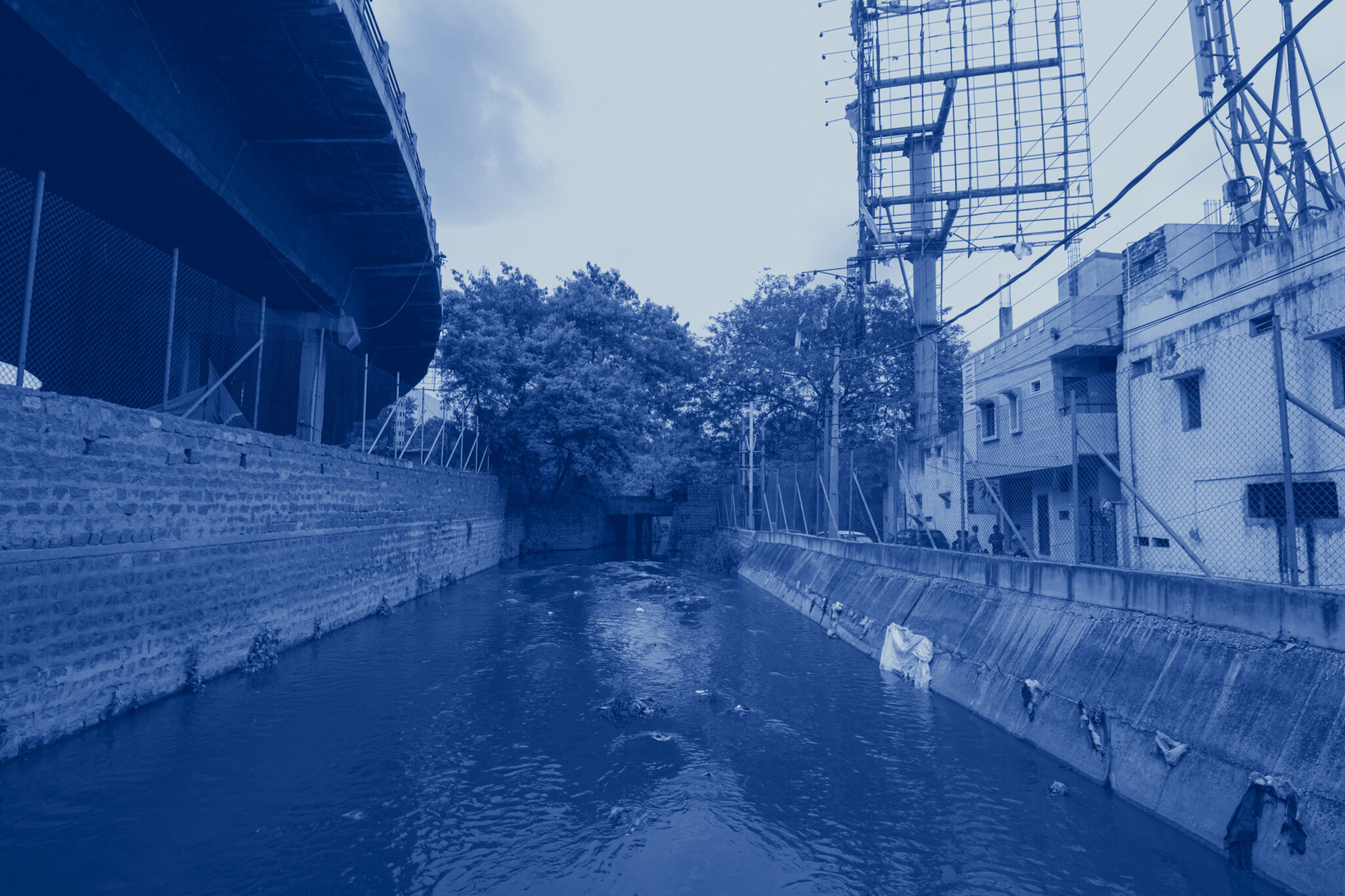
FIVE steps
4
MENTORSHIP &
Community engagement
We will support your idea with relevant mentorship to appropriately respond to the site context. We will also take your ideas to community workshops and get responses and reactions.
1
2
ATTEND i’LOCAL WORKSHOPS
registration
5
Register as an inter-disciplinary team or as an individual. Share a brief background and indicate which of the sites interests you. Download or view the briefs for the sites.
DEVELOP A
detailed PROPOSAL
Attend the two workshops we will organize. Build your capabilities and your understanding of the site.
Submit detailed proposals that we can present to the relevant authorities and donor organizations for implementation. We will also publish some of the best ideas in a compendium for the communities and city-at-large.
3
IDEA STAGE & shortlisting
Respond with ideas that speak to the key themes of safety, heat, children and ecology.
CALENDAR
REGISTRATIONS ARE NOW CLOSED.
STAY TUNED
FOR UPDATES
30 December 2023 / Saturday
4 January 2024/ Thursday
5pm IST
Online Q&A Session (live)
We will answer all your queries on Hyderabad Urban Lab’s Instagram channel (@hyderabadurbanlab)
Registration opens at this link.
13 January 2024 / Saturday
12pm to 2pm IST
i’LOCAL WORKSHOP 1
Hyderabad and the Sites: Places and People
Led by Anant Maringanti and Kuppili Padma
20 January 2024 / Saturday
4pm to 6pm IST
i’LOCAL WORKSHOP 2
Building in a Complex Context: Design and People
Led by Lyndsey Deaton and Swastik Harish

12 February 2024 / Monday
12 March 2024 / Tuesday
10 shortlisted entries announced.
Teams to receive updates via email.
Idea Stage Submission
Mentorship and community workshops to develop shortlisted entries into detailed proposals
13 March to 30 April 2024
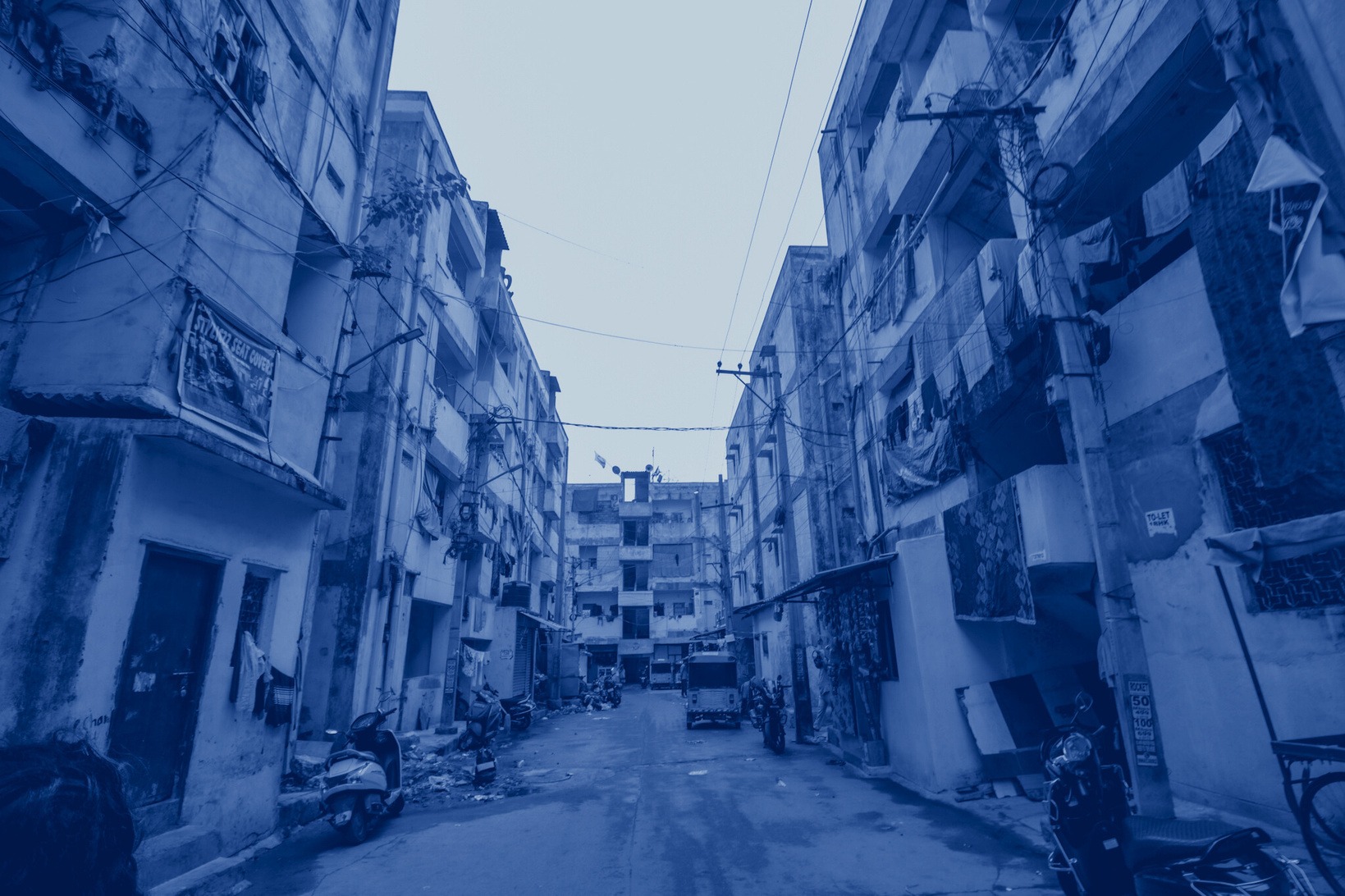
i’LOCAL WORKSHOPS
Hyderabad and the Sites:
Places and People
Led by Anant Maringanti and Kuppili Padma
13 January 2024 / Saturday / 12pm to 2pm IST
Padma and Anant will lead participants through the historical and cultural geographies of the city of Hyderabad, as well as some of the areas of the city where sites are located. They will speak about their engagement with the communities in these sites, with a particular focus on youth, women, children, and low-income workers. Thematically, they will focus on ideas of ‘rest’, ‘heat’, ‘safety’, and ‘ecology’ and how such concepts are received and travel within the targeted communities. This workshop will be particularly useful for those more familiar with ‘hard’ infrastructure and built form, for them to be able to more clearly describe the proposed social outcome of their entry.
Building in a Complex Context: Design and People
Led by Lyndsey Deaton and Swastik Harish
20 January 2024 / Saturday / 4pm to 6pm IST
Lyndsey and Swastik will demystify some jargon and technicalities on design and the built-form. They will walk participants through global practices in ‘place-making,’ participatory design, and strategies for gathering evidence. They will describe how a selection of precedent projects have been conceived, planned, designed, implemented, and operated. They will also touch upon a variety of production means in low-resource settings and logistics considerations for complex contexts. Lastly, they will appraise participants on how their designs will be ‘socialized’ within communities. Since the implementation is expected to be in partnership with the local governments, they will discuss key administrative bindings of these systems.
JURY
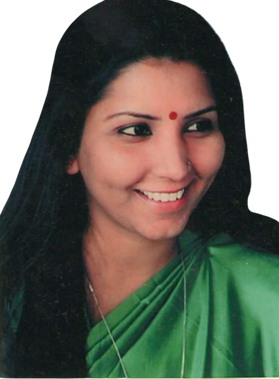
Kuppili Padma
Kuppili Padma is a feminist creative writer and columnist in the Telugu language. Her primary concerns revolve around how women work their way through disabling circumstances and find their voice and agency. She is known for her lyrical prose and themes of nature and romance. But a significant strand in this is the urban setting. The material world - the street, the workplace, the park, the public transport, the mall, the security guard's room - these are all locations navigated by her characters.
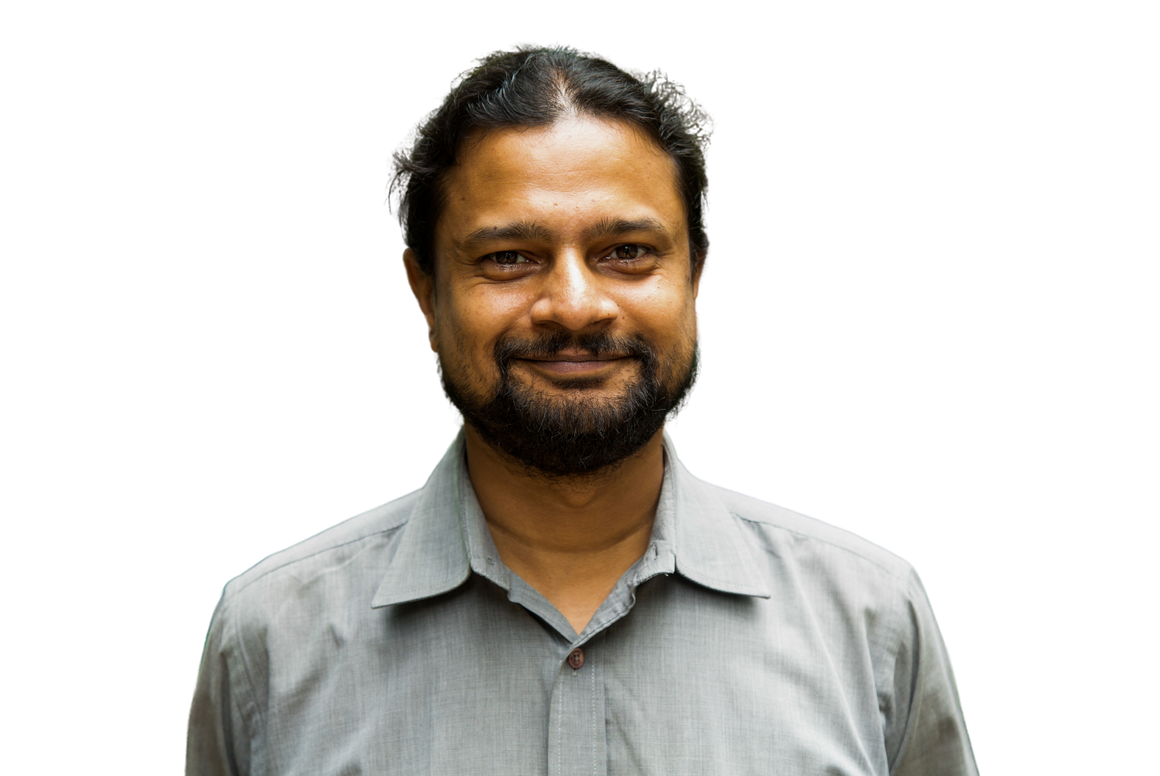
Swastik Harish
Swastik Harish is an urban development and capacity-building expert with more than 22 years of experience across a range of areas including expertise in land and housing for the urban poor, design and the development sector, public healthcare systems, and climate change. He has worked closely with the public, private, non-profit, and academic sectors on practice, pedagogical, and research projects. His portfolio includes research and research methods, evidence-based practice and policy-making, and pedagogy for practitioners.
Explore his work here: swastikharish.com

Lyndsey Deaton
Lyndsey Deaton approaches the practice and study of the built environment through a sociological framework highlighting the experience of women and children in low-income communities. She is a licensed architect and certified planner with over 100 projects across the United States, the Middle East, Asia, and Africa including a wide range of research and design in Hyderabad, India. Dr. Deaton is an Assistant Professor in the School of Architecture at Clemson University, USA and practices as a Senior Architect and Planner with The Urban Collaborative. Across all endeavors, she is inspired by the capacity of design to empower stakeholders toward collaborative solutions.
Explore her work here: lyndseydeaton.com
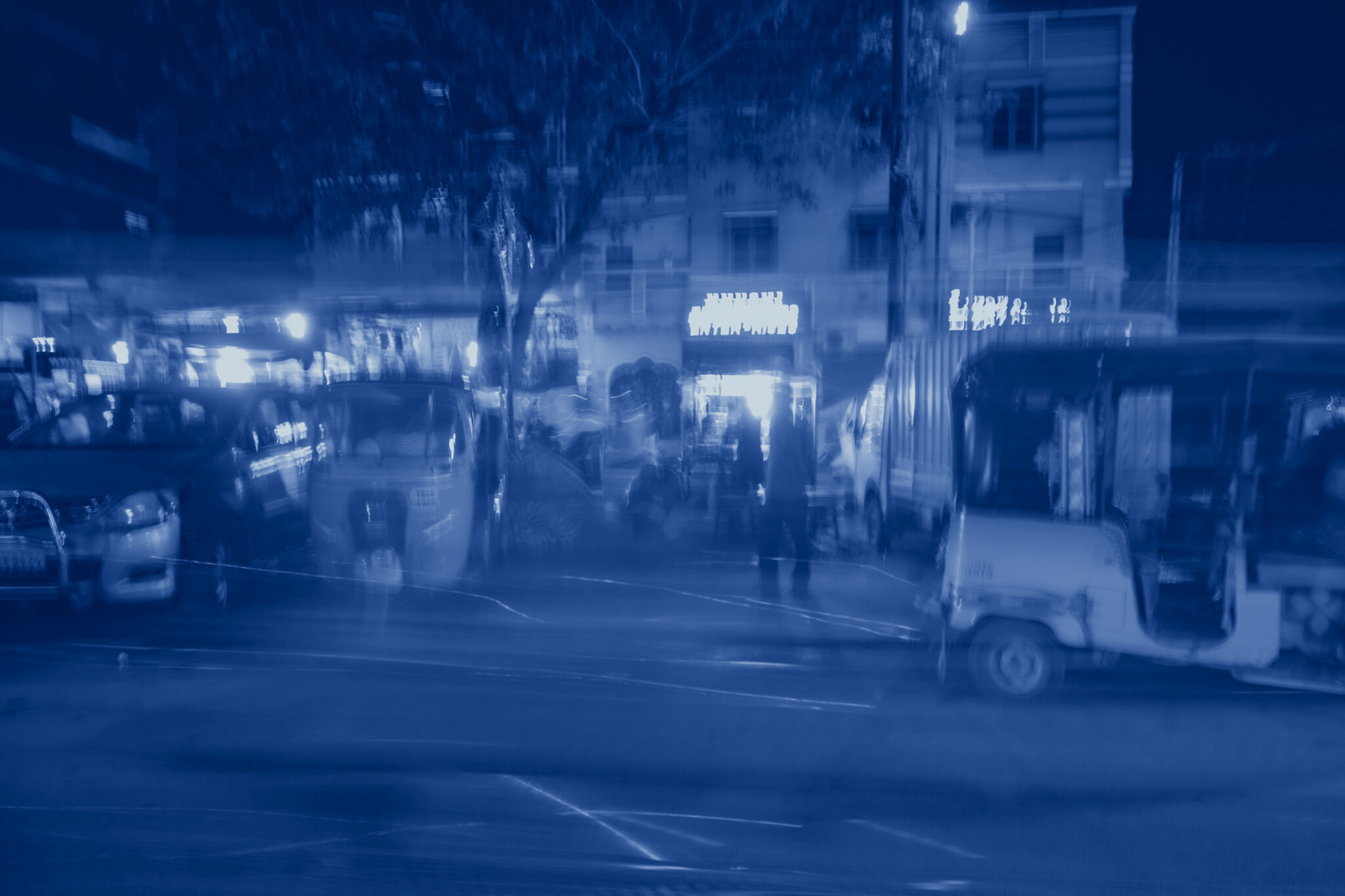
The evaluation is expected to happen at two stages:
(1) Ideas and (2) Selected Proposals.
At the Ideas Stage (1), we expect you to have a fairly substantial understanding of the site, its environs, and its socio-cultural context. Ideas need to respond to one or more of the key themes in this brief. Your entries should communicate the idea’s focus, means, and impact.
Then, in the Selected Proposals Stage (2), the final 10 proposals will be based on an elaboration of the overall theme of i’Local, that are:
- Imaginative: they allow us to create new narratives about the sites;
- Low-cost: they relate to something that can be done within a few lakh Indian rupees;
- Action-oriented: they can have a definite impact on the ground, especially for local communities, and;
- Trans-disciplinary: they push the envelope in terms of their mix of disciplines and how they relate to each other.
Evaluation
Criteria
Idea Stage
Submissions
Ideas can be social/community programming, physical infrastructure and small interventions, or innovative documentation of the site and/or its re-imagination.
Teams can submit ideas in various forms or combinations thereof. Visuals should be restricted to three A3 sheets; text to about 1,500 words; and videos should not exceed more than four minutes. Innovative multimedia experiments are welcome too! In all cases, for the Ideas Stage, please limit the file sizes to 10 MB.
- Your ideas must contain a social proposal that indicates the affected or helped group (you could submit this as text, a stakeholder chart, a systems mapping, etc.).
- Your ideas may also contain a spatial proposal that describes how the space may be used and/or developed (you might submit architectural drawings, renderings, sketches, text, collages, etc.).
- Lastly, we encourage you to include an operational proposal that describes how it could sustain in the medium term (an operational budget along with a description of resources, etc.).
10
SITES
Spread across
Hyderabad!
A vacant nook on
a busy road, Nizam-era
police outposts, social
spaces nestled amidst public
housing complexes, garbage
vulnerable points, low-profile
heritage sites and more. Here is
your chance to reshape the
future of these forgotten
corners of the city!
Phool Bagh
Nestled between the Hill Fort Palace, GST Bhavan and and LB Stadium Road is a low-income public housing colony called New MLA Quarters. The site is an open space adjacent to the Phool Bagh maidan on the main road in the housing colony. Like many other public housing quarters, this one suffers from issues in basic services and a lack of maintenance. Cramped buildings line narrow streets, while piles of garbage fill the back lanes. This open space, in a central location offers a space to the residents to catch a breath of fresh air. Residents actively use it for multiple purposes, often spilling out of their cramped homes to claim this space. Women sit and talk while peeling vegetables, people sell vegetables in the evenings, young girls find a corner to play with their chalk and stones, goats skip around and boys use the boundary wall as seating to watch their (usually older) friends play cricket in the maidan. Sometimes funerals and wakes are organized in this space and there is flag-post used on national holidays, but on most days people park their thelas/bandis (carts) and store leftover Ganesh idols that didn’t sell in the last festive season. The neighborhood also has a few active community associations. A government-run Health and Wellness center stands adjacent to the open space. We invite you to ponder the mix of users and functions in this fairly high-density development.
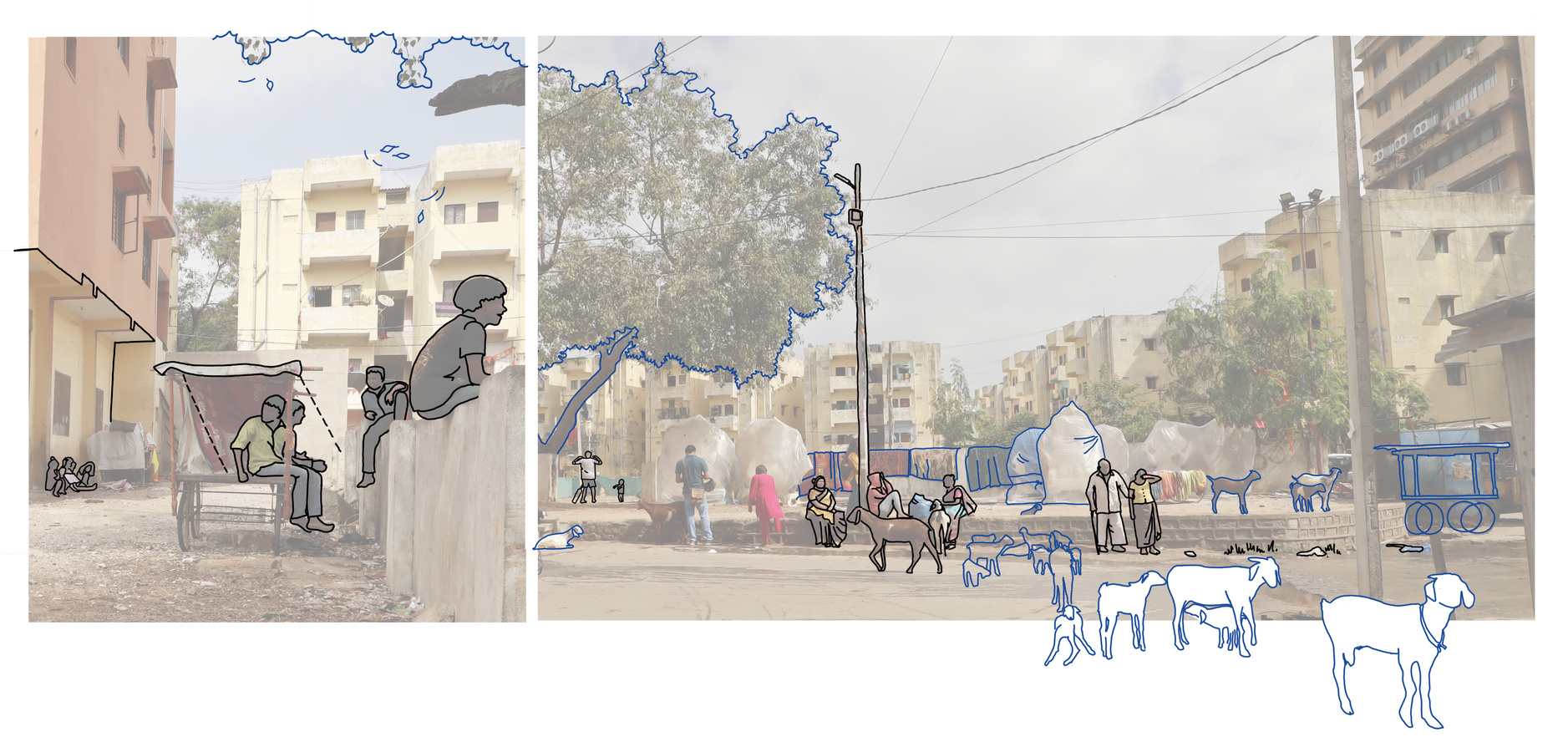
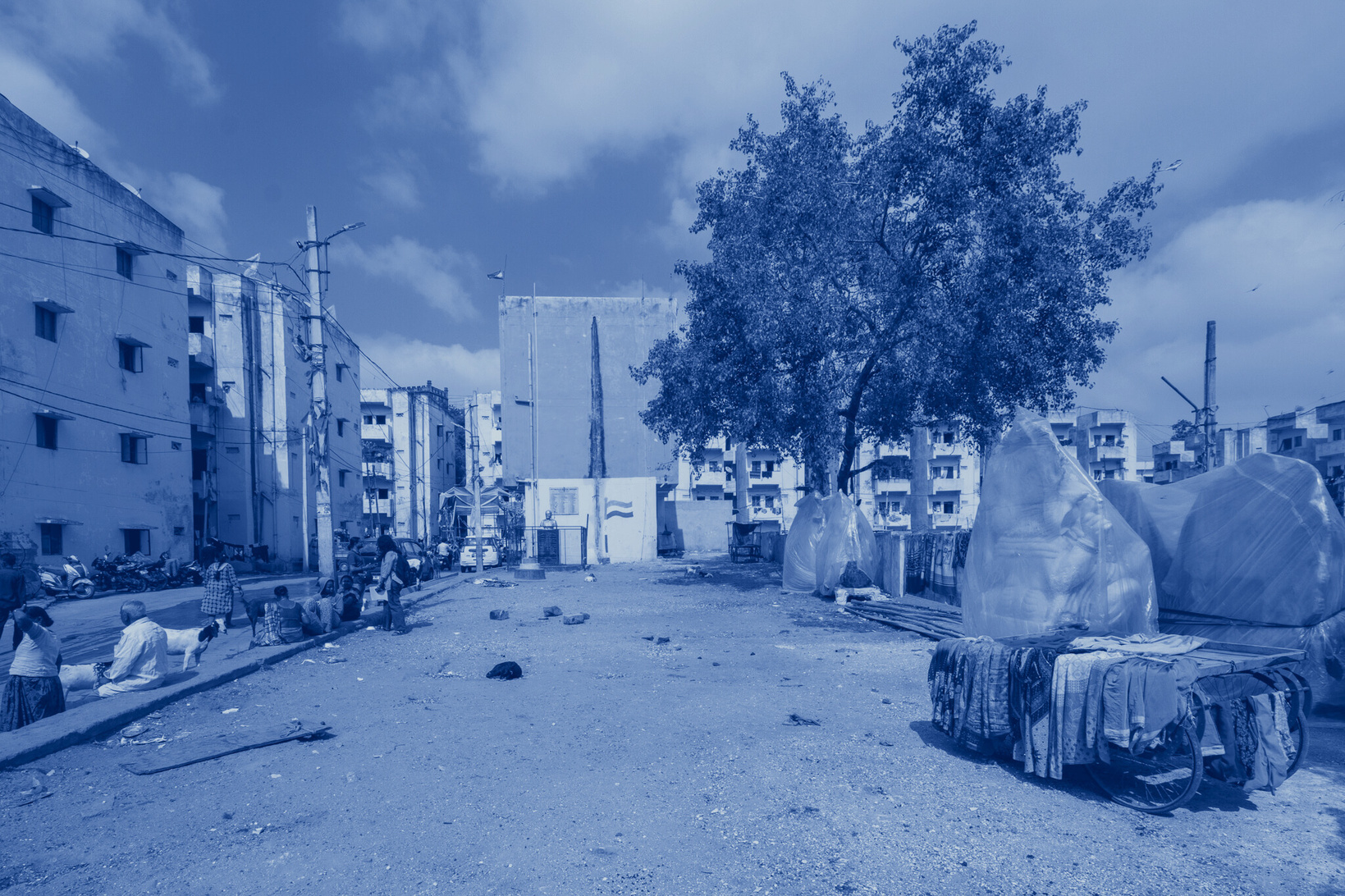
Flip through this deck to discover more about the site →
How can we ensure young children have
safe and nurturing spaces to meet,
play and learn in their neighbourhoods?
Prem Nagar Rock Garden
At the edge of the affluent Banjara Hills neighbourhood, this rock garden is nestled at the end of a small, nearly unnoticeable road. Featuring the city's distinctive topography, the garden has large boulders stacked on the east and old, shady trees forming a gentle canopy overhead all over the side. Its a beautiful space, with birds chirping and flowers blooming, and cool even when the afternoon sun is blazing above. A recent landscaping effort by the GHMC has added in a few benches to sit, some new tree plantations, and a short looping walkway. But where are the people of the neighborhood?
Upon speaking to a group of young men playing cricket in the garden, an issue of access and ownership crops up. The park is almost exclusively accessed by these men who live close by and who stubbornly hold the keys to the park. They access it once a day to meet each other, hang out, play cricket and have their sneaky smoke breaks. Then they lock up and leave, and the park stays empty. This open space is a rare treasure hiding in the city, and can undeniably hold value for those currently unable to use it — girls from the neighborhood, young children who lack playgrounds, elderly people, and so many others!

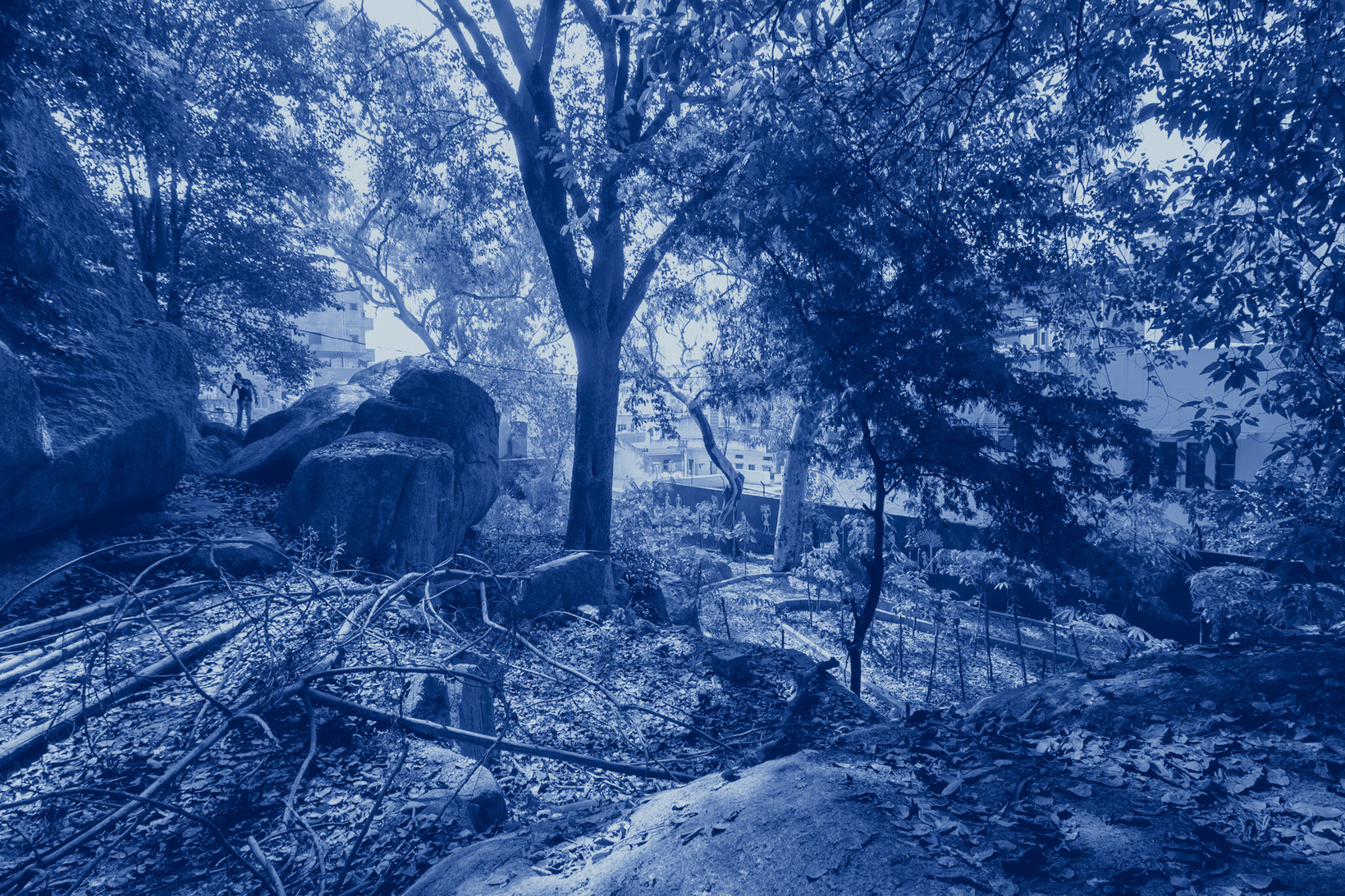
Flip through this deck to discover more about the site →
What makes us feel
safe in the city?
How do we ensure safety and access for diverse groups in our
common spaces?
Khajaguda Hills
A geologically significant heritage site in the Manikonda Jagir Municipality, it is marked with prehistoric rock formations estimated to be 2.5 billion years old. Discovered by the Society to Save Rocks in 2004, it is home to many unique species of flora and fauna and attracts rock climbers and hikers. The hills, alternatively known as Baba Fakhruddin Gutta, hold religious significance, cradling a Dargah, a temple, and a spiritual centre for Meher Baba devotees. Khajaguda Hills are facing a growing threat as urban sprawl and real estate development encroach upon its borders, endangering its rich ecology and heritage. Recognizing this threat, collectives of rock climbers (like the Society to Save Rocks) and nature enthusiasts have been campaigning for its preservation. Conventional ideas of ‘development’ often see our ecological heritage as expendable or superfluous, something that can be done away with to fit in swanky new buildings and large-scale construction projects. Using available resources and keeping its ecology central to the design, can we shift ideas of what is permissible, desirable and possible for such a site? What stories can we tell about the ecological and natural marvels of Hyderabad and the Deccan?
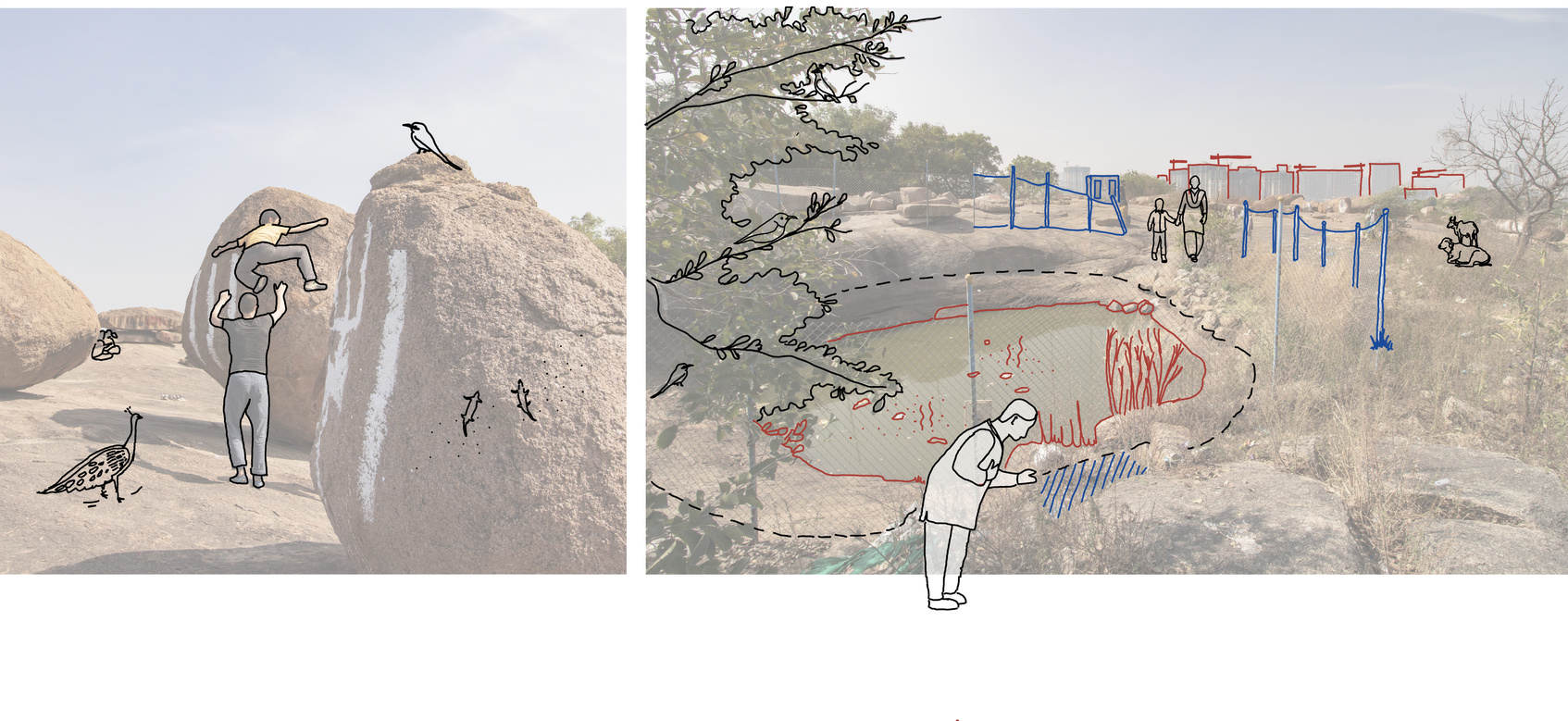

Flip through this deck to discover more about the site →
How do we
safeguard our ecological heritage against the
urban growth machine?
In what ways can we connect with nature
in the urban?
Lata Enclave - Old Bus Stop
At the curve of the busy Yousufguda main road lies a nook — a former bus stop in one of Hyderabad's central hubs. The road receives a continuous flow of vehicles throughout the day and lies close to two metro stations. The spot still has the bus shelter and is usually occupied by a couple of cars belonging to locals, and sometimes by taxis, autorickshaws, and delivery motorcycles. Due to its proximity to Ameerpet, there are a significant number of students' hostels within walking distance, in addition to a public toilet, hospitals, eateries, and vegetable shops that line the road. How can we re-imagine the purpose of such vacant spaces that outlive their original functions? Can they offer practical value to a new set of users or spark curiosity in people passing by?
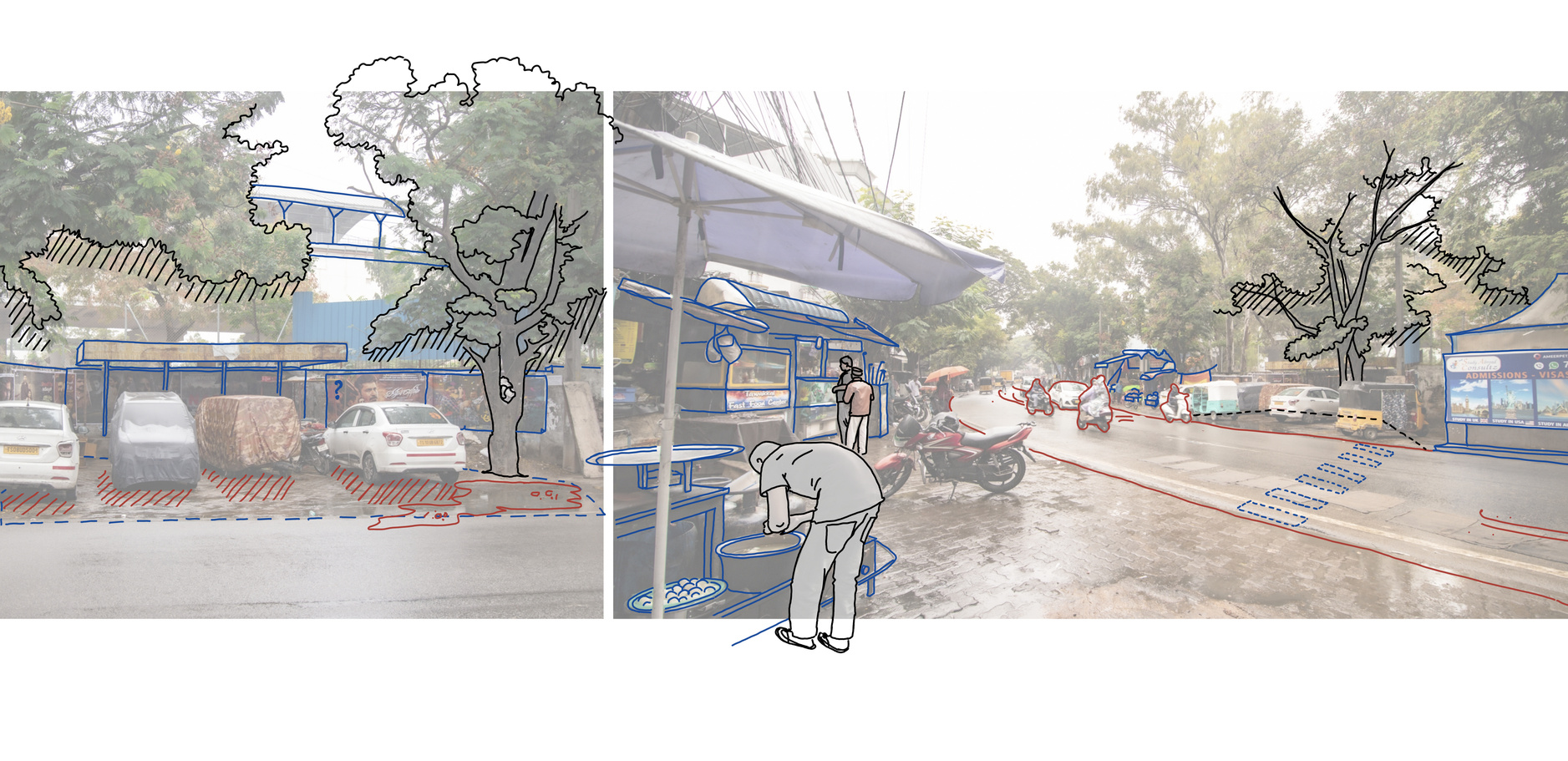
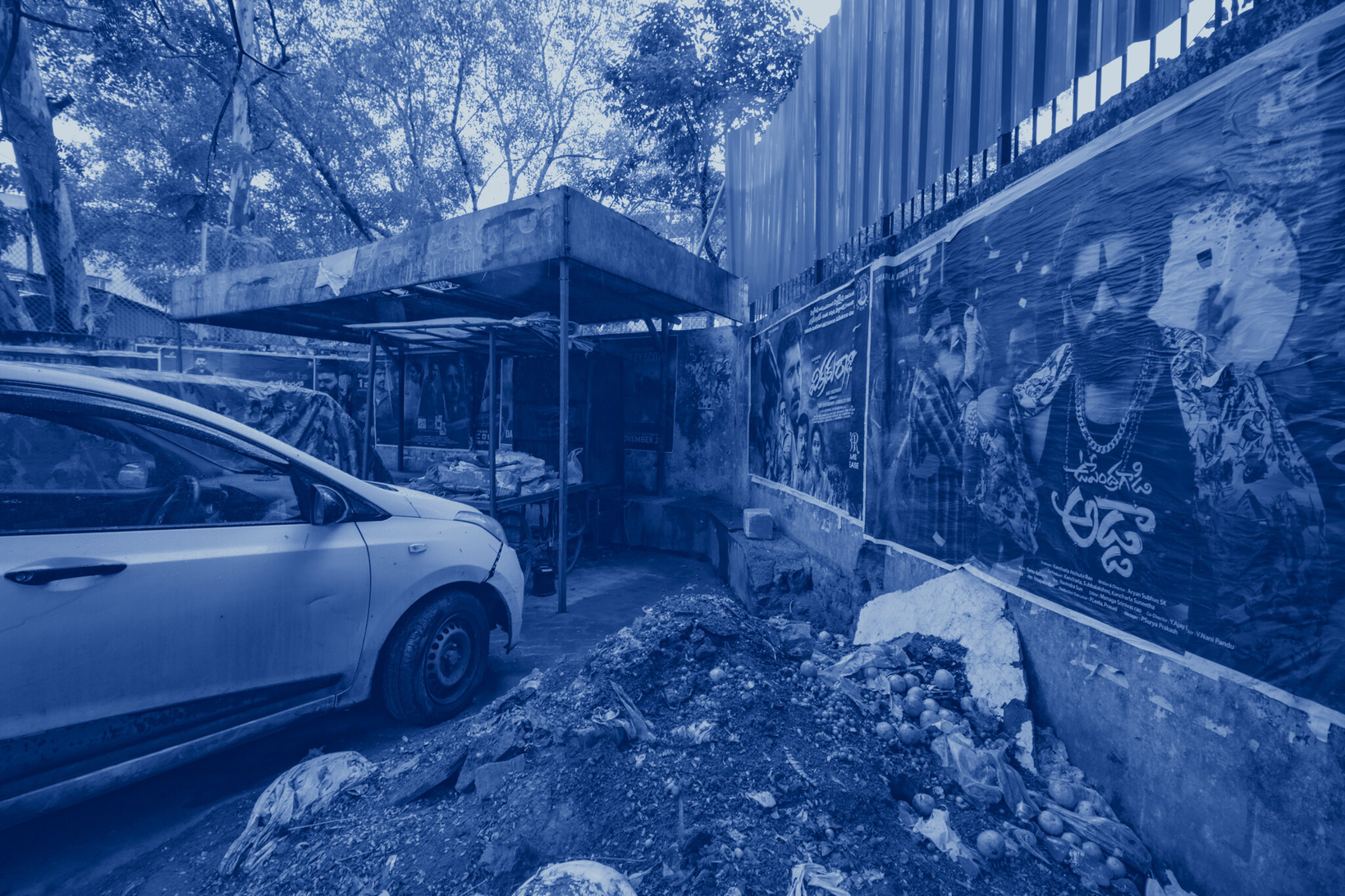
Flip through this deck to discover more about the site →
Fuzzy spaces,
defunct infrastructure, and nooks in the street can be so much more than just car parking! How can we reimagine our street sides?
Teegala Kunta X-Road
An oval street island in a bustling crossing near the Old City of Hyderabad, the site is surrounded by a mix of eateries, clinics, repair shops, and religious institutions. At all times, a lot is going on in the space: it is inhabited by a shrine and an electrical transformer and is used as a street food hub in evenings, an auto rickshaw stand all day, and as parking for bikes and cars. The autorickshaw drivers complain about the cars taking up too much space. While the cars belonging to the residents of the area assert a strong claim to the space. While it definitely is a street-design challenge, it is also raises questions of ownership, functional utilities, diurnal changes, and neighborhood negotiations. Keeping in mind the competing interests of the users of the space, and the gendered nature of the space, how do we tackle the complexities in re-imagining the space?
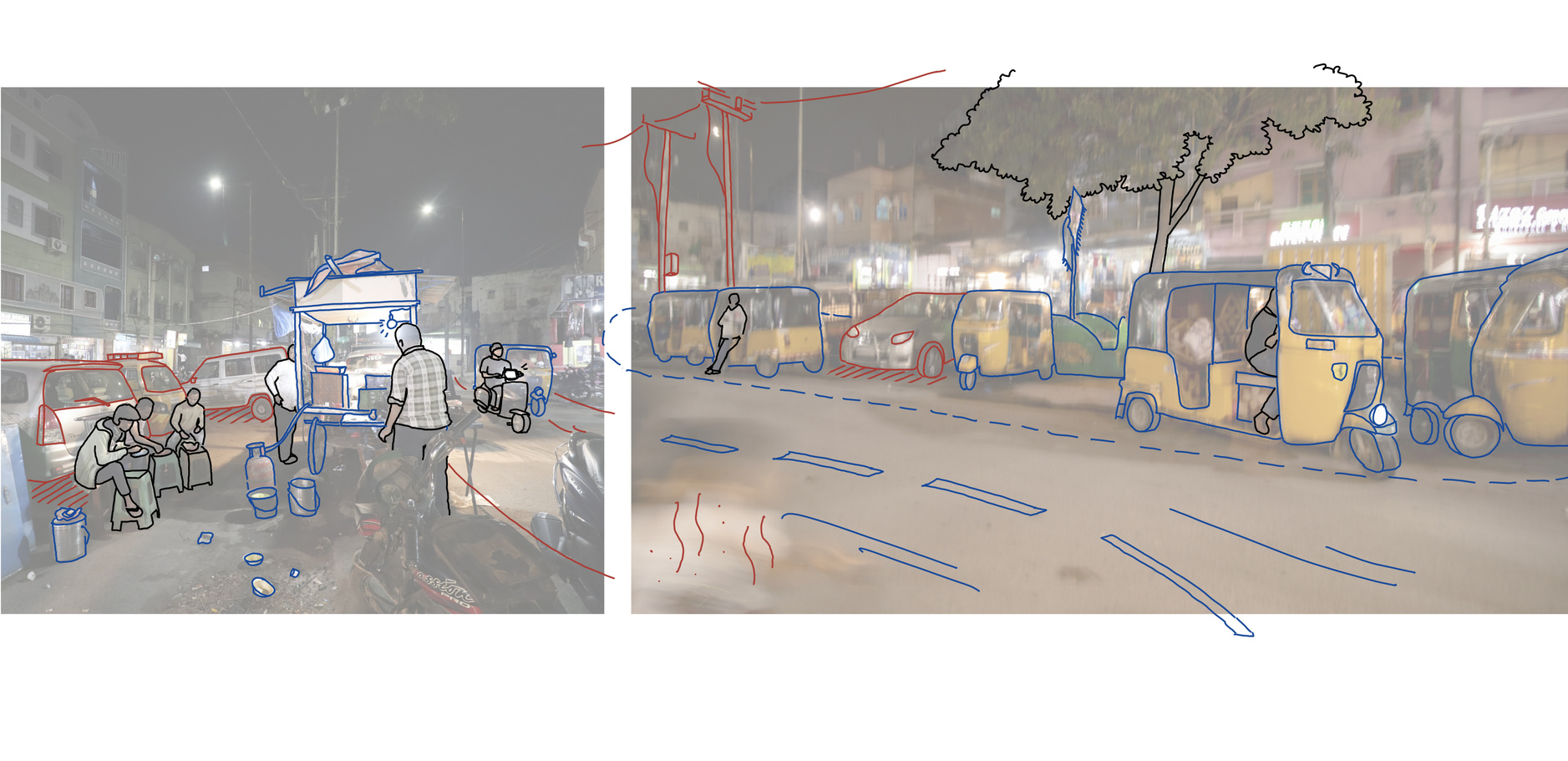
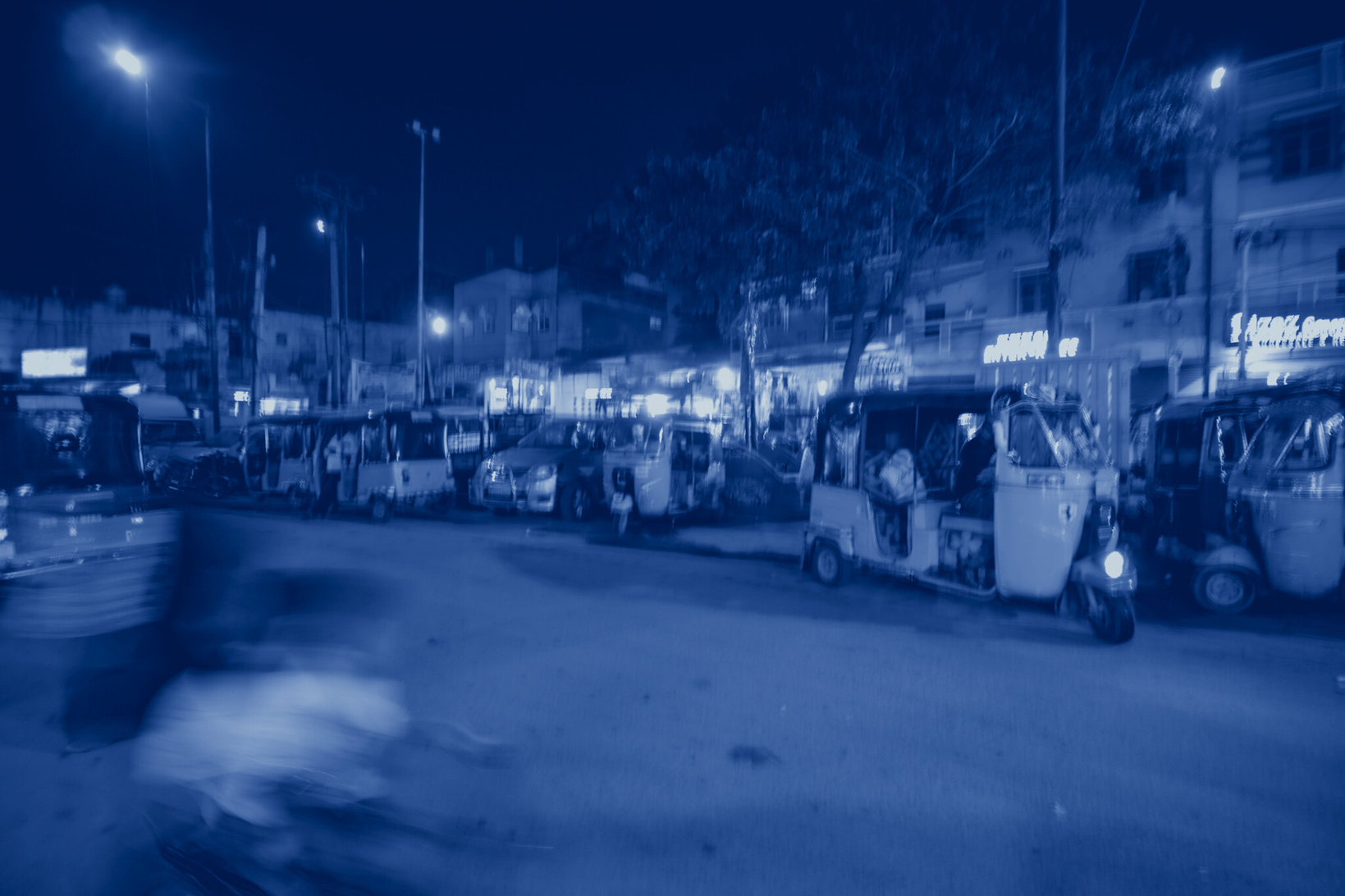
Flip through this deck to discover more about the site →
It’s a street island,
an auto stand, a street food hub, car parking, a shrine, a space for an electric transformer and the only public space for kilometers. How can
we tackle this
complexity?
Khairatabad Market
Nestled alongside a nala between the high-density urban localities of MS Maqtha and Khairatabad, this plot below the Khairatabad flyover, under the purview of the Greater Hyderabad Municipal Corporation (GHMC) presents a unique opportunity. A vibrant neighbourhood market on Tuesday evenings, it is a deserted parking lot on all other days. For over a decade, a local vegetable market, organized by a few local leaders of Khairatabad, has taken place on this plot, spilling over onto the adjacent bridge over the nala. The market has its challenges: unmanaged garbage on either side of the bridge disrupts the market's smooth functioning, constricting vendor spaces, who end up spilling onto the roadways. Vendors and shoppers tirelessly negotiate the resulting congestion.. In stark contrast to Tuesday's vibrancy, the space reverts to its function of accommodating a handful of cars for the rest of the week. With almost no one around, the care-taker puts up a puncture-repair stall right outside and struggles to get customers. The concretized plaza remains locked most of the day. The market is an ingenious adoption of this negative space under the flyover. What can we learn from it, to activate the space at other times. We invite ideas that can propose functions appropriate to the site without disrupting the current market.
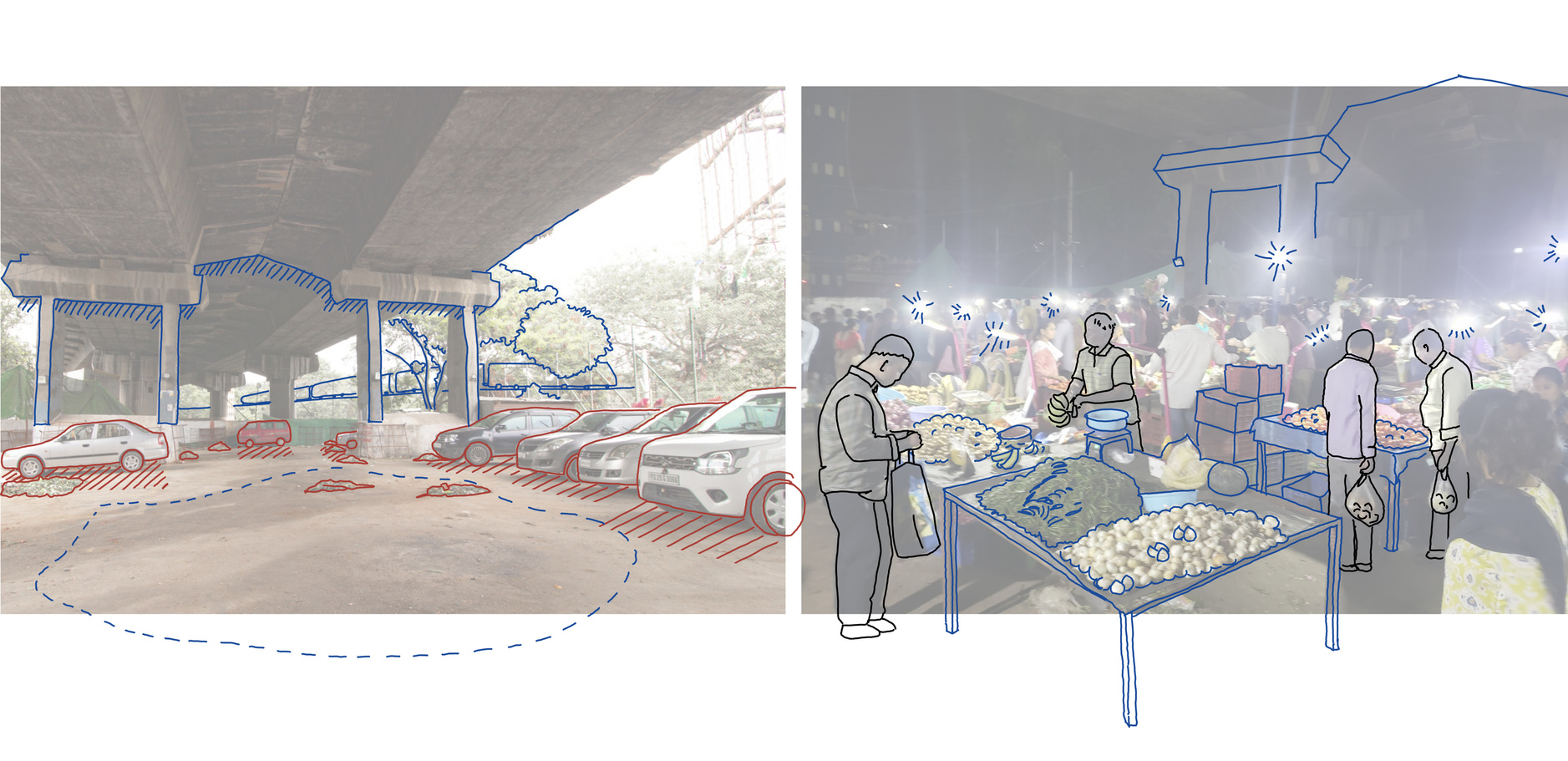

Flip through this deck to discover more about the site →
On Tuesday nights,
the market is bustling with life, but what about the rest of the week? Can it be more than a deserted parking lot?
Old Police Outposts
Eight old police outposts within Hyderabad's Old City stand as remnants of the Nizam era, known as "Nakas". Rough equivalent to contemporary police sub-control rooms, these structures are not only historical relics but also share an architectural style between them that sets them apart. The Kishanbagh outpost, like others, is in a dilapidated condition and only serves a limited role, as an occasional spot for rest or temporary workspace for police officers in the area. However, it offers a potential node for community activities in the Old City neighbourhood. We invite you to explore these structures sprinkled across the city, and explore their potential for practical use today!
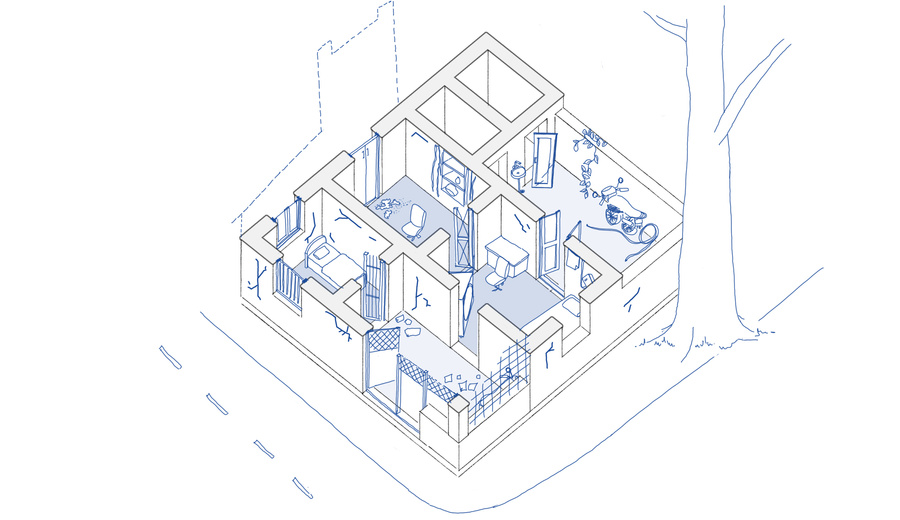
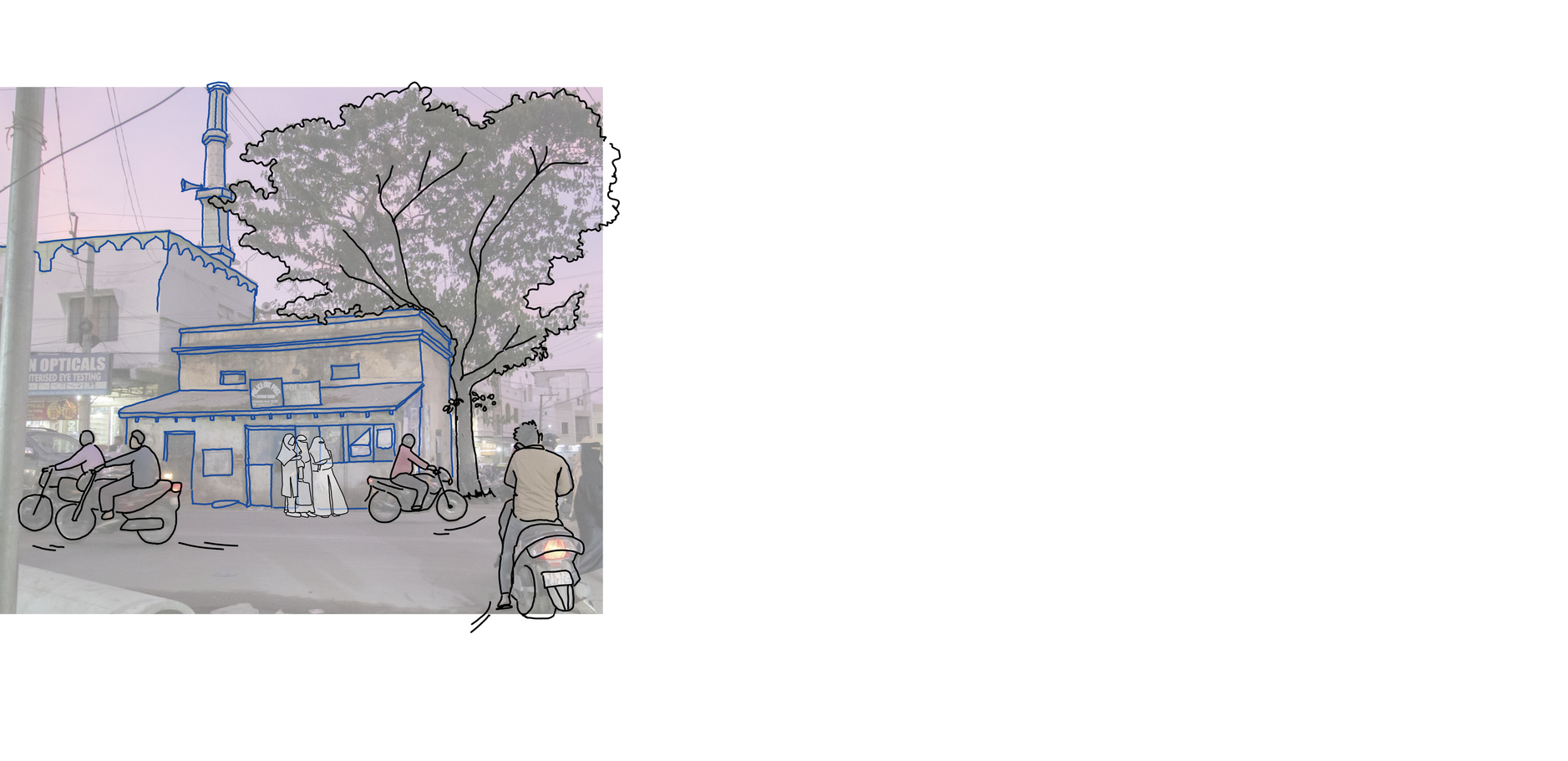
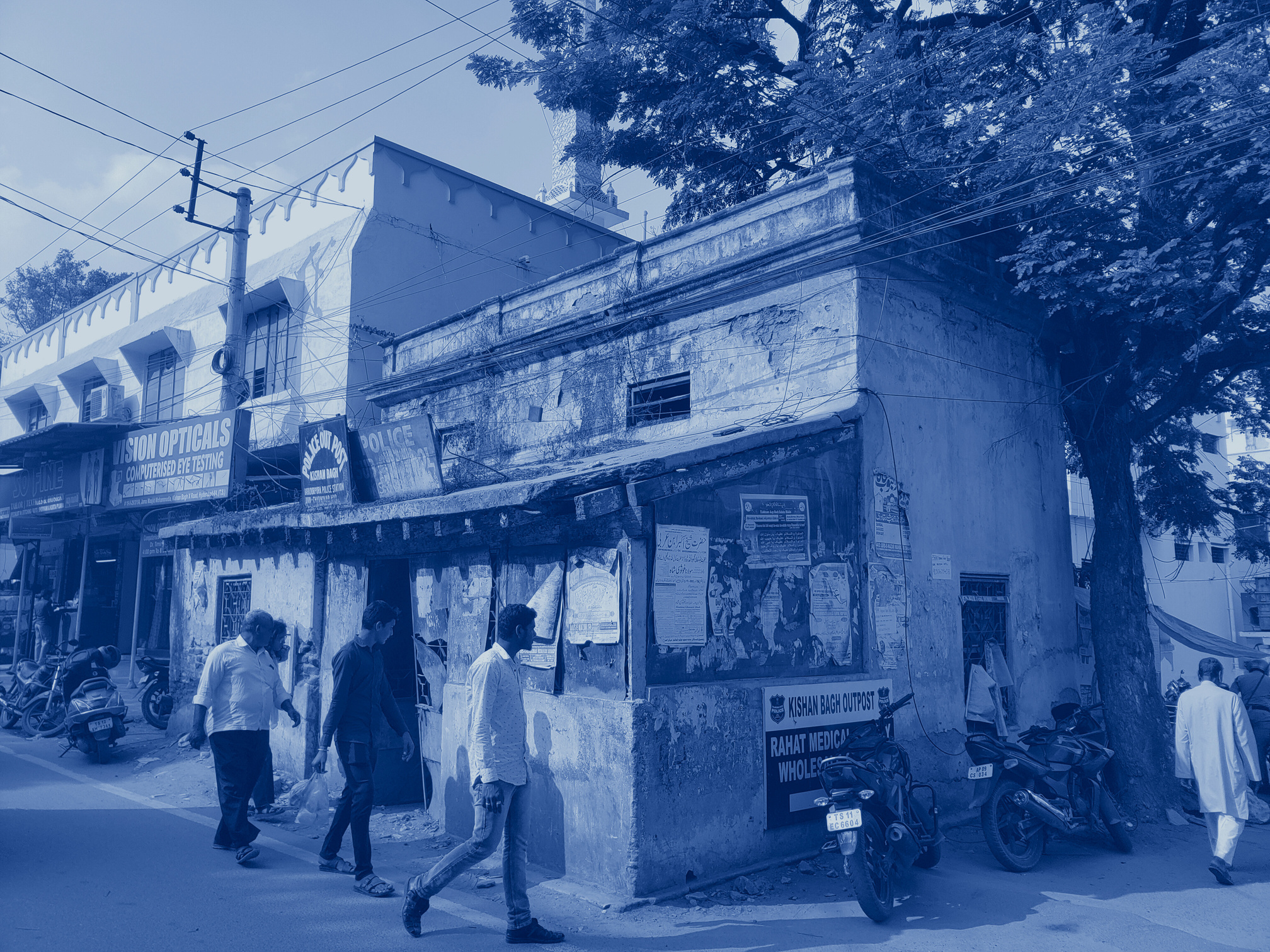
Flip through this deck to discover more about the site →
Sprinkled across
the city, can these NIzam-era public assets be revitalized to be useful to the local residents today?
Kite Park Saroor Nagar
Situated within a tranquil, laid-back residential neighbourhood close to the Saroornagar Lake, a small open space serves several functions for the neighbourhood. Surrounded by a few churches, a dargah, a school and unassuming buildings and houses, the space is mainly used by children as a playground, but also serves as an event venue for gatherings and religious events. The small plot has an interesting but humble rock formation on its site and many birds visit the area around it throughout the day. However, the presence of parked cars inside the plot diminishes the play area for children, somewhat limiting their movement and exploration. We invite you to make this a fun play area for children, without giving up its multi-functionality.
The lack of playgrounds and sports facilities in nearly 50% of schools in the city contributes to children's diminishing connection to nature, impacting physical, mental and social growth. This issue extends beyond children, affecting young adults, women, the elderly, and differently-abled individuals who face isolation and limited recreational opportunities. Can the kite park be re-imagined as a public space that is safe, accessible and inclusive, can we reconfigure the kite park in a way that enhances opportunities for socializing, creativity, and learning, especially for children and the youth?
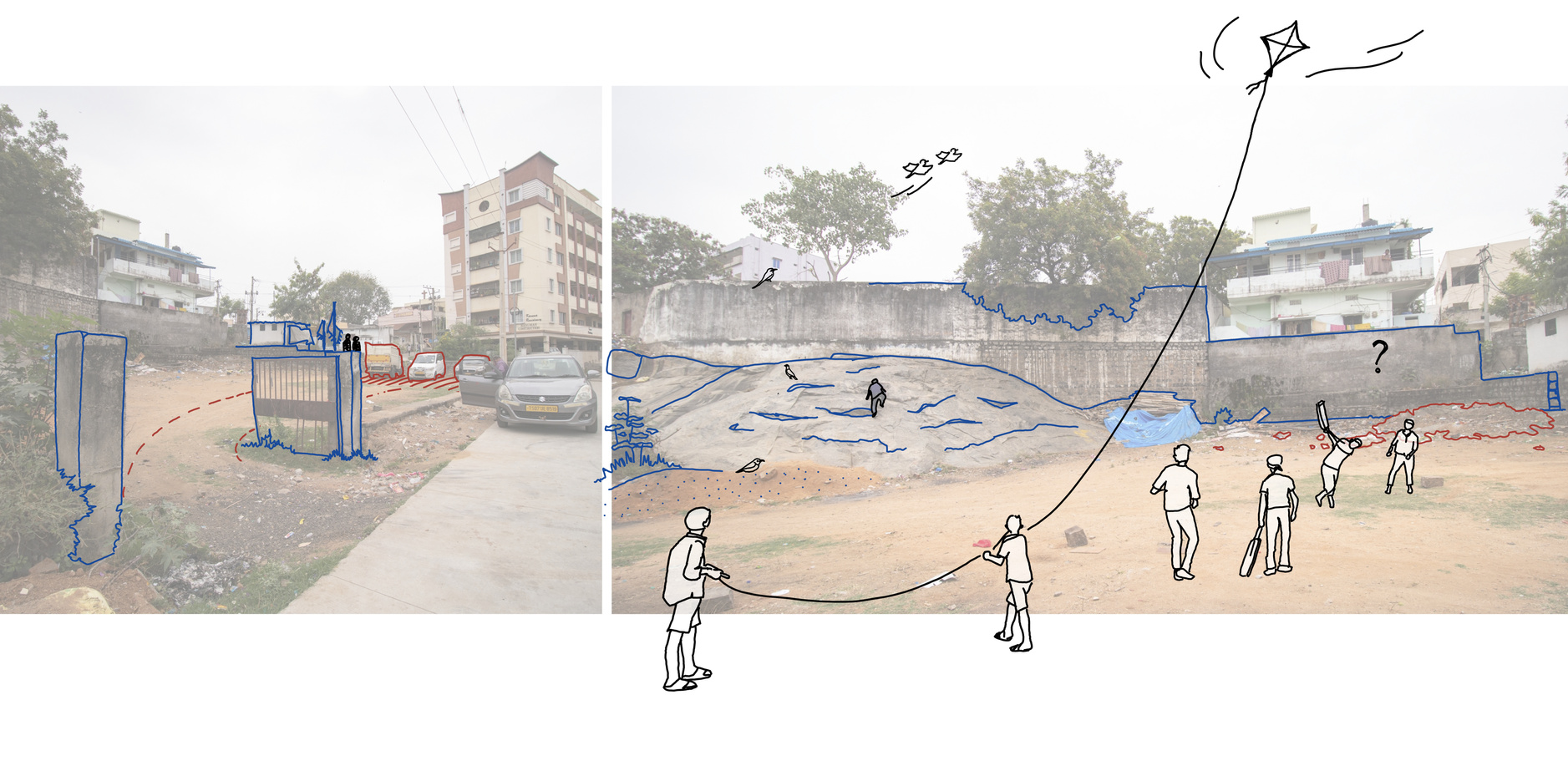
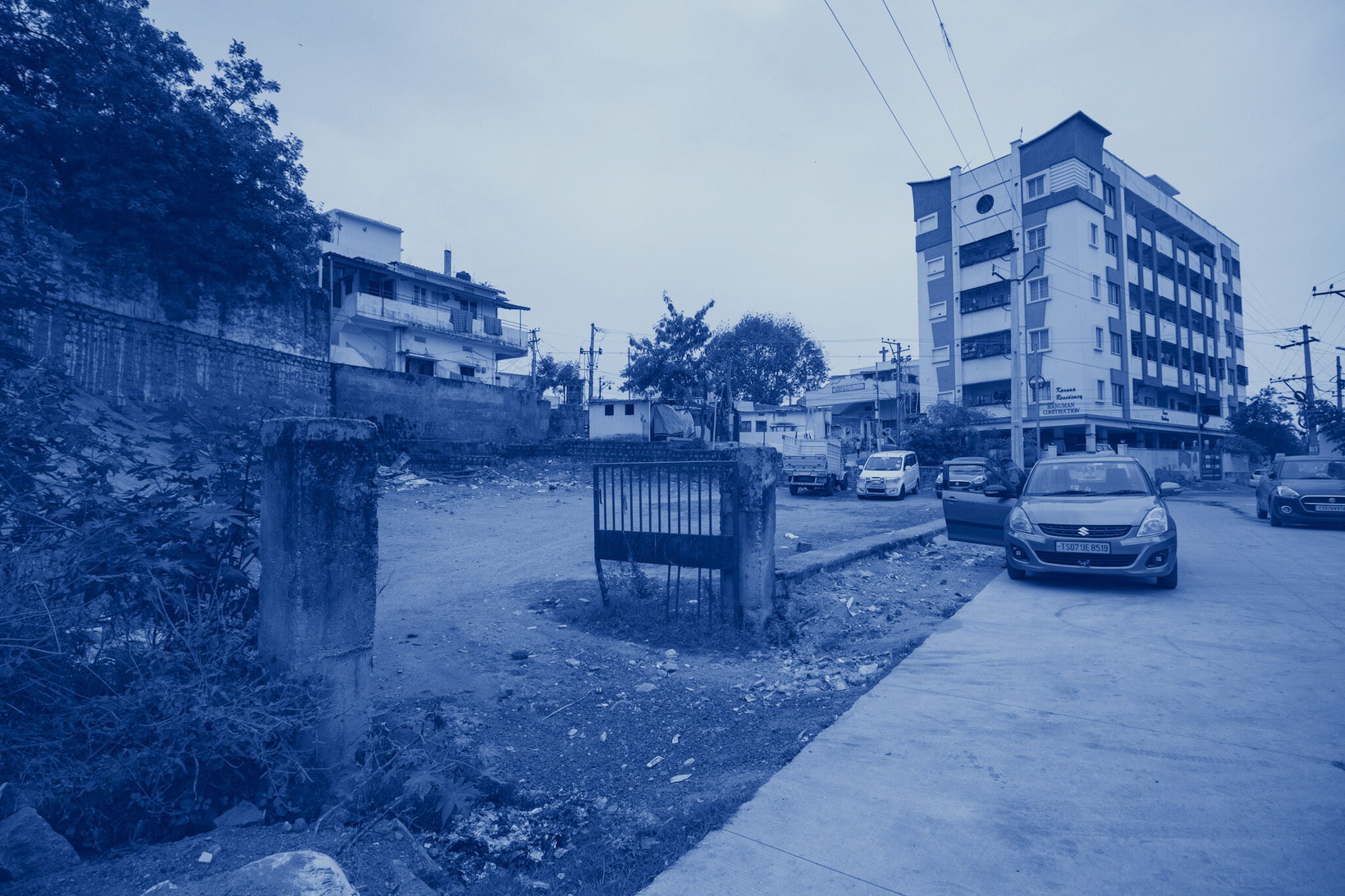
Flip through this deck to discover more about the site →
Playing cricket,
climbing rocks, doing yoga, hosting events, watching birds, gossip corners, sneaky rendezvous, kite flying! What roles can a neighborhood
park play?
Singareni Colony
Singareni Colony is a neighbourhood situated in Saroornagar, Hyderabad. It is located towards the south of Hyderabad and is adjacent to the Saroornagar Lake. While there exist multiple entry points into the settlement, the colony itself isn’t well connected to the public transport options available to its immediate formal neighbour - Saroornagar. The colony is marked by narrow lanes, and tightly packed residential units. In terms of housing, the area is basically a patchwork of 3 kinds of residential units- hutments, government housing blocks and older middle class housing units of different housing societies. The VAMBAY government public housing colony is a high-density development that replaced a former slum through a rehabilitation project in 2005. While legally integrated into the city, the colony's tenement-style apartments are plagued by a lack of maintenance and usable communal/public spaces. Persistent piles of garbage in common areas and between buildings pose health risks and undermine residents' sense of ownership and control over their environment. Creating safe and accessible common spaces is a profound opportunity to improve the residents’ lives. The colony has many youngsters eager to better the neighbourhood. The Dalit Women's Collective, a community organisation working to empower marginalised communities is also highly active in the area. We invite you to re-imagine what a couple of open plots can be, and how we can work with local residents to create and maintain these spaces?
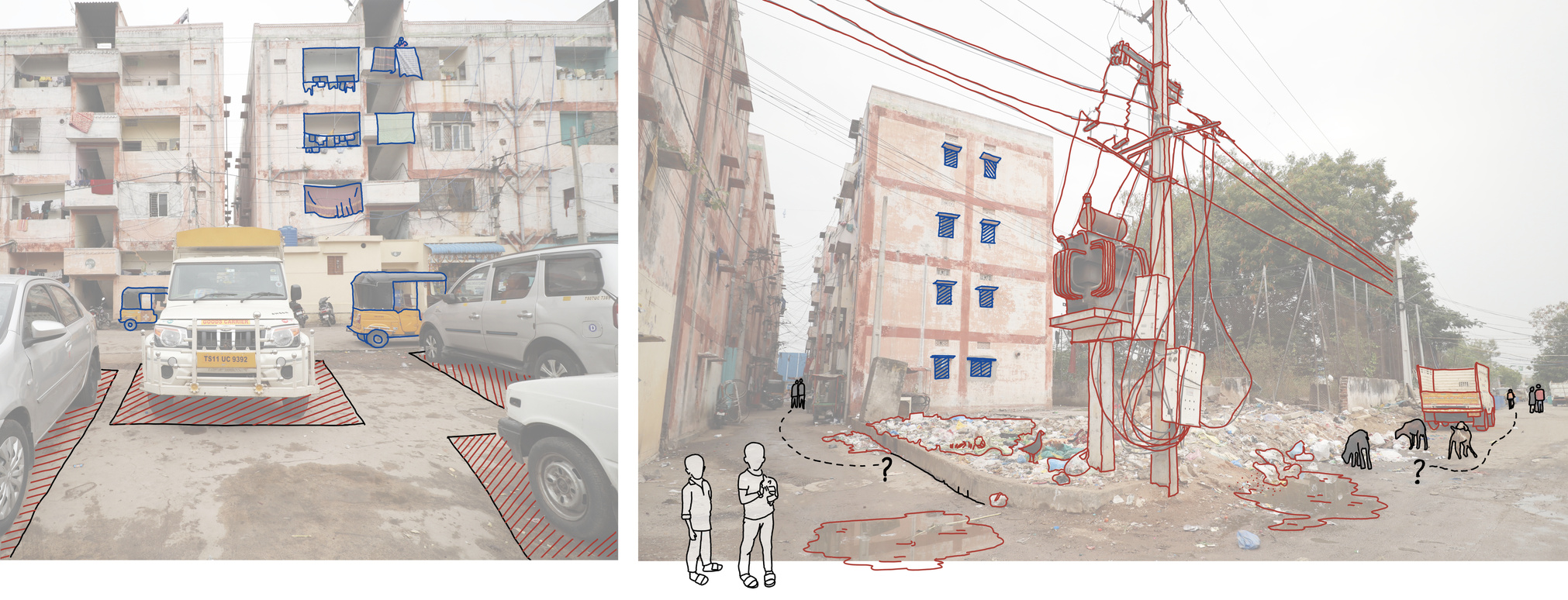
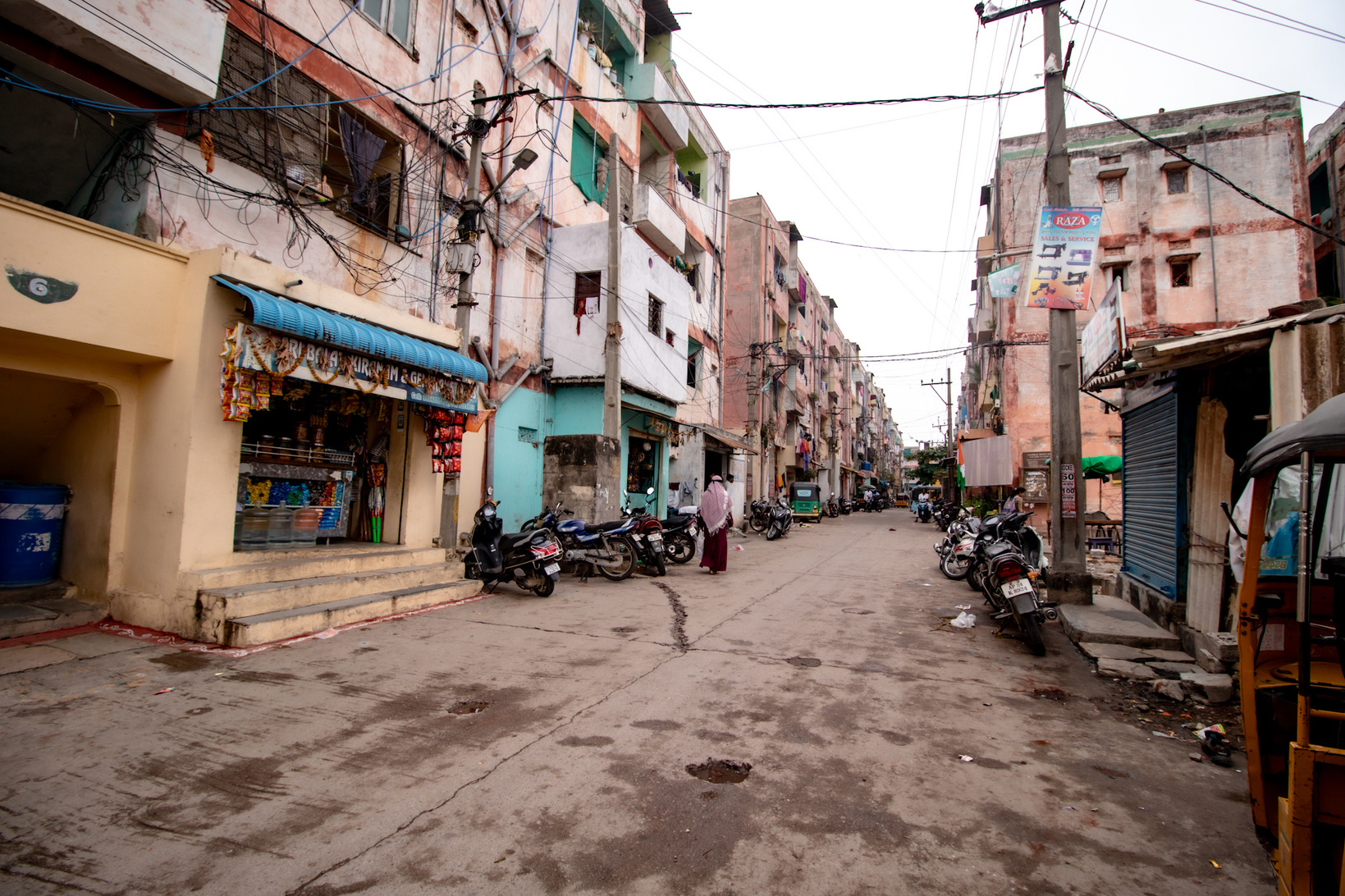
Flip through this deck to discover more about the site →
Can rethinking waste management at the neighborhood scale transform garbage vulnerable points into valuable community resources?
Around Amin Khan’s tomb
The Tomb of Abdul Qadir Amin Khan is located in Patancheruvu, Hyderabad, and dates back to 1568. Flanking Patancheruvu-Chandanagar main road, the entrance gate is marked by a group of bike and car servicing garages. The caretaker of the tomb also runs one of these garages. There is another tomb to the north-east which is not that well known. It is flanked by an informally built Dalit settlement. While the entrance into Amin Khan tomb’s compound is well landscaped and shaded, right behind it is a large patch of open and neglected land. Residents of Dalit colony tell us that the path used to have a settlement very similar to theirs but it was resettled into an Indira colony around 10 years back. This has now become an ad-hoc parking for residents from the neighbourhood, as well as for patrons of a hospital located close by. This open space transitions into a graveyard some distance away. Residents tell us that the graveyard management and local government have been in conflict about the ownership of the land at this site, and a boundary wall keeps coming up and pulled down regularly. Residents refrain from using this open space at all, but sometime use the second tomb as a community gathering space as it is shaded by a large canopy of a tree. There is a lake right opposite the main road but they say never go that way, as it is considered too dangerous. Located in the outskirts of Hyderabad, this peri-urban site presents a complex challenge. There is history and built heritage to celebrate, immediate residents who could use the space as relief from extreme weather and day-to-day challenges of living with precarious housing tenure. What would you do to tackle this complexity?
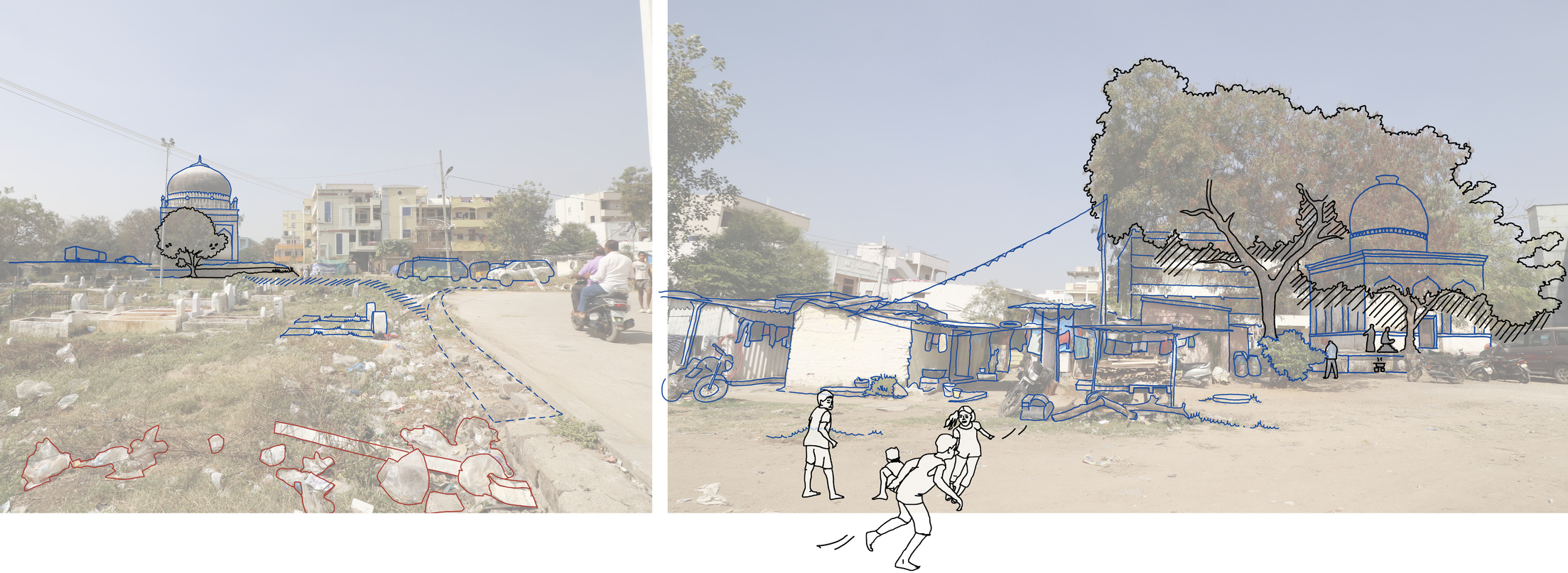
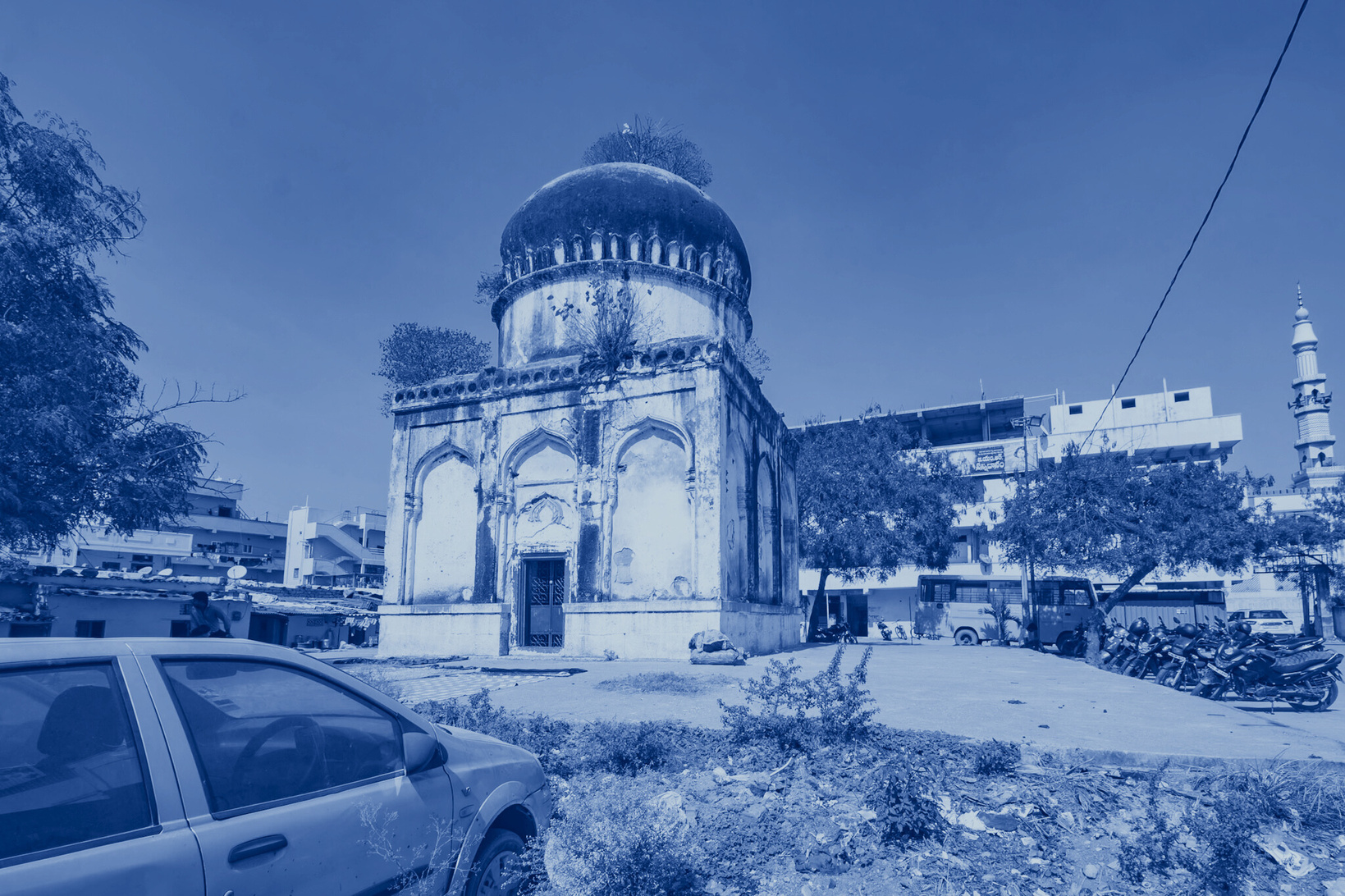
Flip through this deck to discover more about the site →
How do we
balance heritage appreciation with the current realities of life, giving children places
for play and leisure
and to cope with
extreme heat?
FAQs
At the moment, I am unable to form a team. What can I do?
Register as an individual and form your team later. We can help you find potential collaborators too.
What would be the timeline for implementation if our idea is selected?
After the announcement of the 10 shortlisted proposals, we hope to have implementation plans in place in 2-3 months.
What nature of mentorship would be provided to the shortlisted teams?
The shortlisted projects will be matched with mentors appropriate to their needs. We have identified potential mentors with experience in social sciences, humanities, community work, government, technology, architecture and design and activism besides members of local community who could bring their wisdom.
Can we submit ideas for more than one site?
Absolutely.
I want to find out more about the competition. Who can I ask?
Contact us at askhydlab@gmail.com and we will respond to your queries.
What do you mean by inter-disciplinary teams?
In an urban context, no one discipline (such as planning, architecture, media, law, engineering or social sciences) can generate solutions by itself because urban life is a mix of these experiences. We encourage teams from across disciplines such as these to work together, learn from each other and come up with imaginative ideas - that speak to the very nature of urban life.
I am not from Hyderabad. How do we understand the sites beyond the representation in the brief?
Do contact us. We may be able to put you in touch with people from Hyderabad who could visit the sites for you and transmit a closer understanding.
What are the chances that our proposal will get implemented?
We have an ongoing MOU with the Ministry of Municipal Administration and Urban Development, Government of Telangana, to promote innovative solutions for neighborhood infrastructures. Under the MOU, Hyderabad Metropolitan Development Authority (HMDA) and the Greater Hyderabad Municipal Corporation (GHMC), and other agencies are expected to support implementation. Within the opportunities and constraints of these government systems, we will push to get some ideas implemented. Simultaneously, we will work with CSR actors to implement some ideas.
Organizers
Hyderabad Urban Lab (HUL) Foundation is an interdisciplinary research and action initiative based in Hyderabad. It began in 2012 as the flagship programme of The Right to the City Foundation, a public charitable trust. From 2012 to 2016, HUL carried out a series of action research and community work projects in the city of Hyderabad.
In 2016, HUL reconstituted itself as a non profit company under Section 8 of the Companies Act (2013).
Going forward, HUL’s work is organized broadly through three programmes: Khidki, School and Observatory. HUL is in the long term committed to producing knowledge that enables action at many scales from the neighborhood to the state. This work is focused on three thematic areas of urgent concern – work and employment, learning and education and climate justice.
HUL is founded on three core values: openness, collaboration and entrepreneurship.
Find out more about HUL here: hydlab.co.in
Let‘s reclaim our right to transform the city through transforming ourselves!

